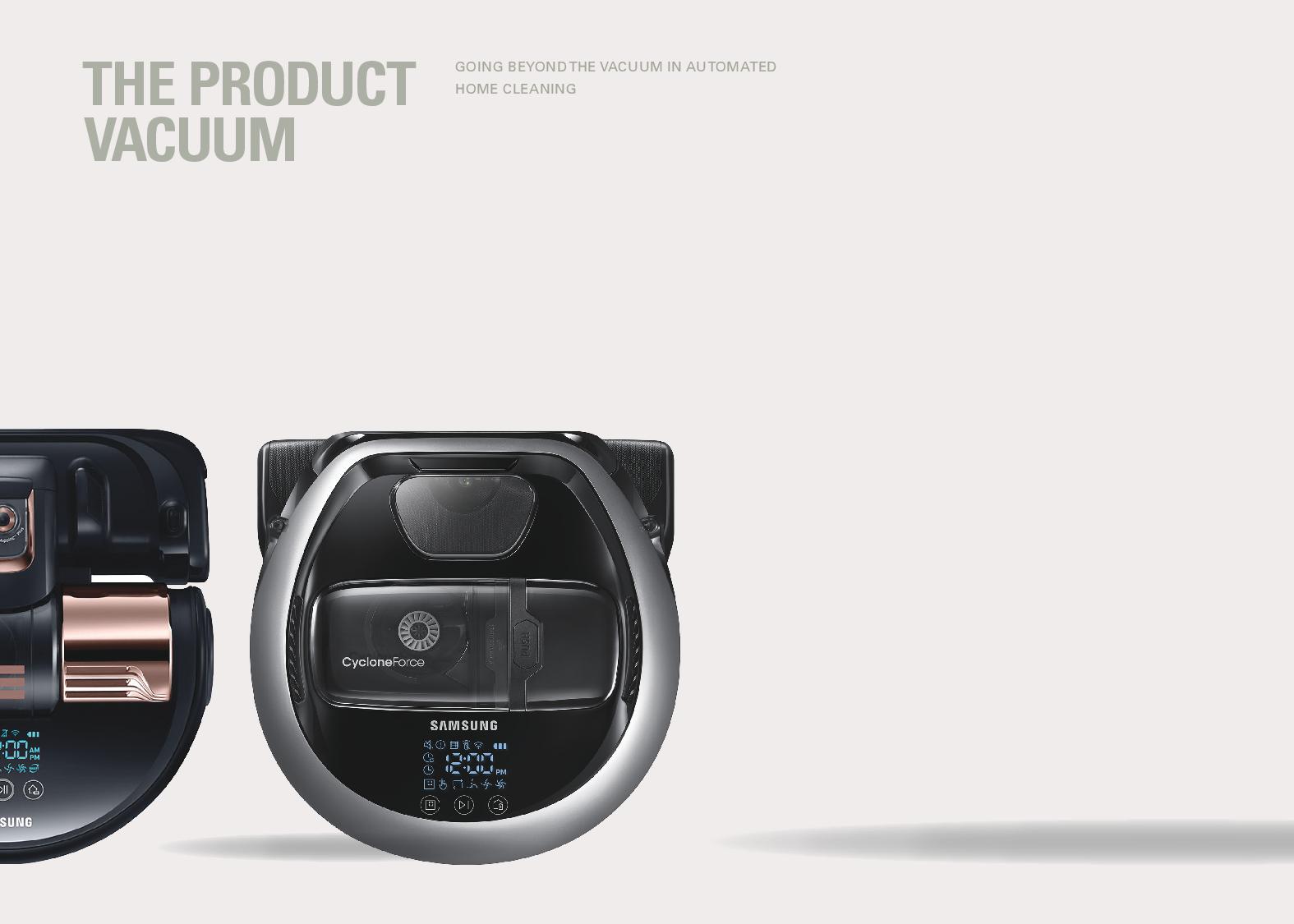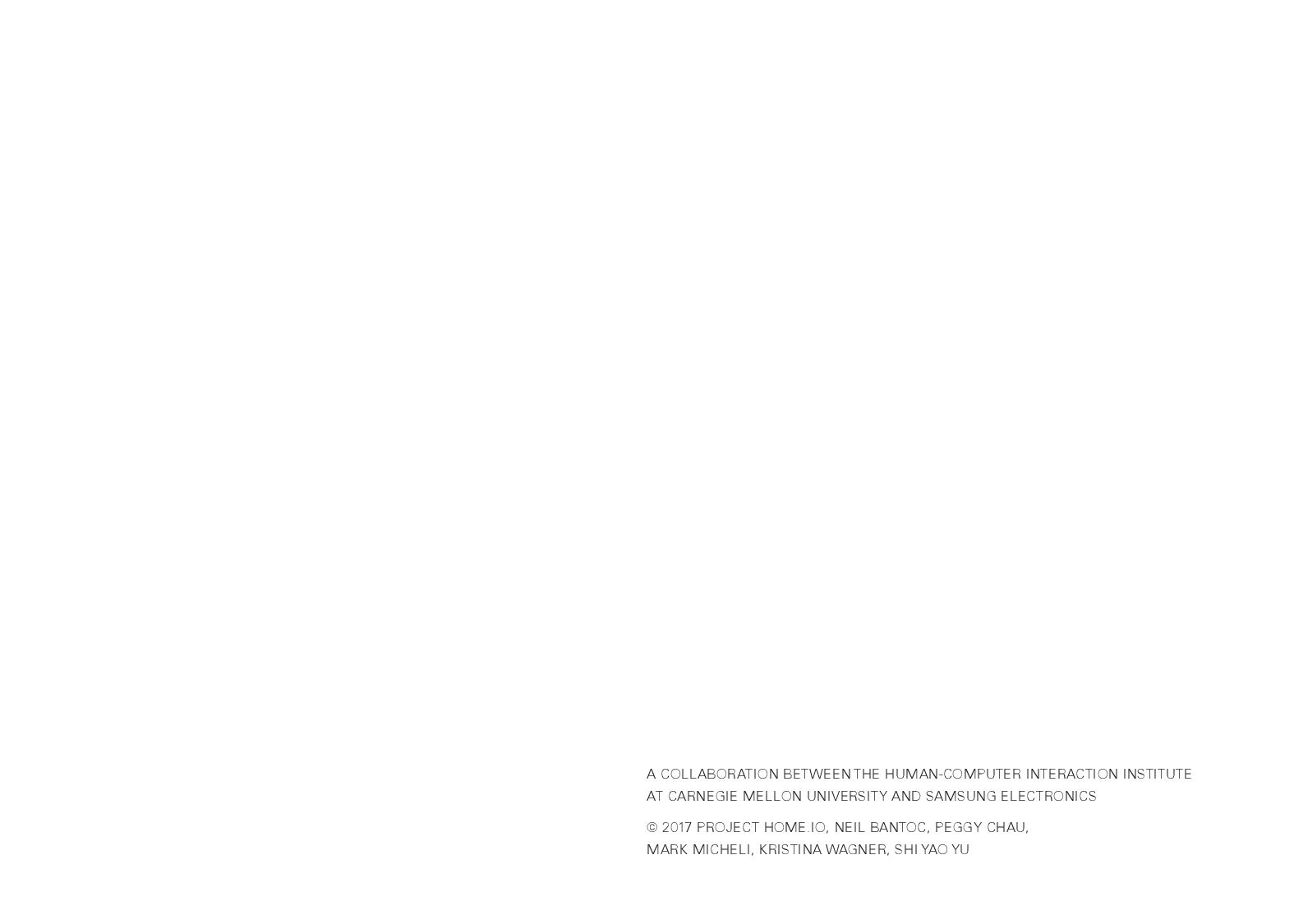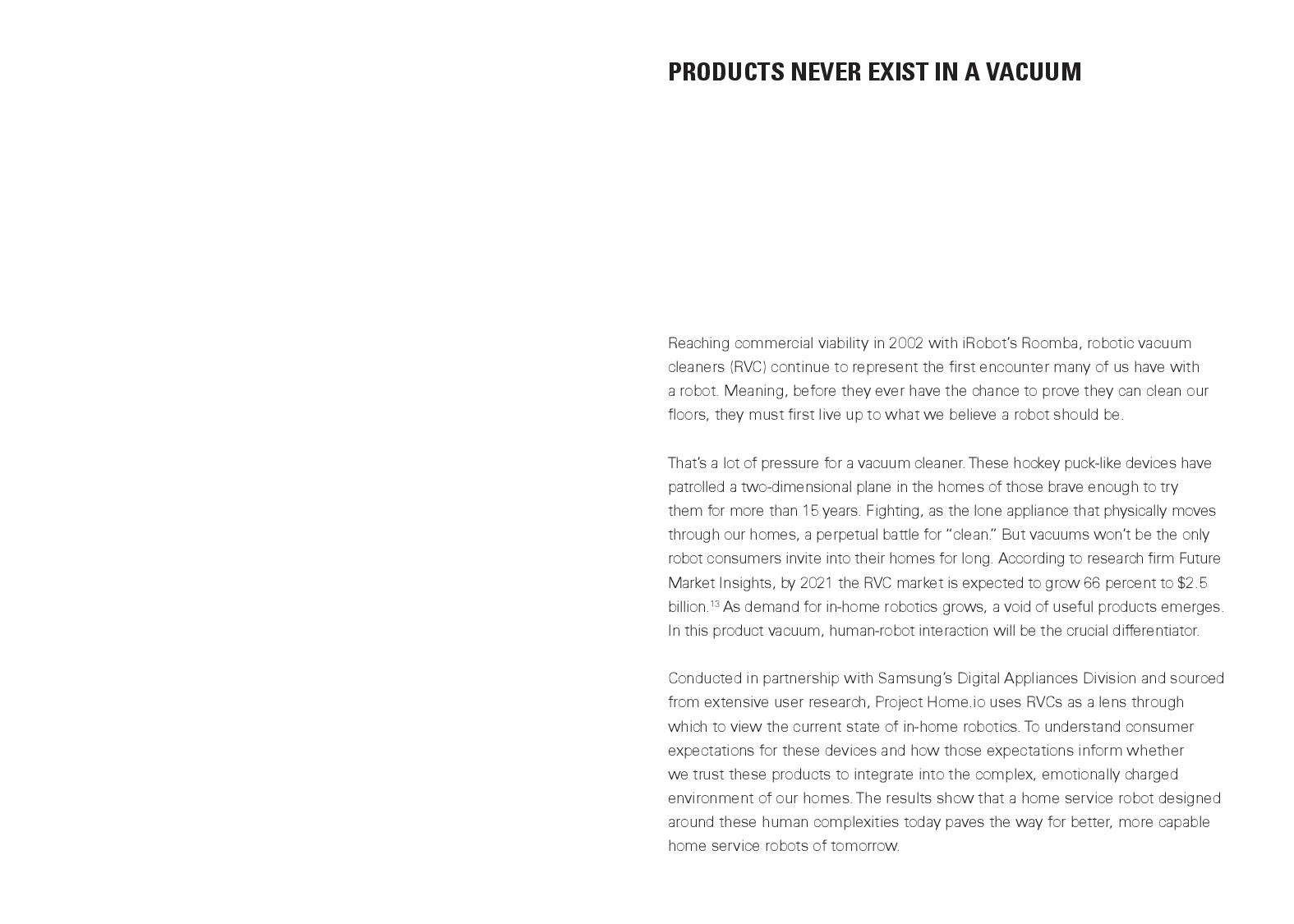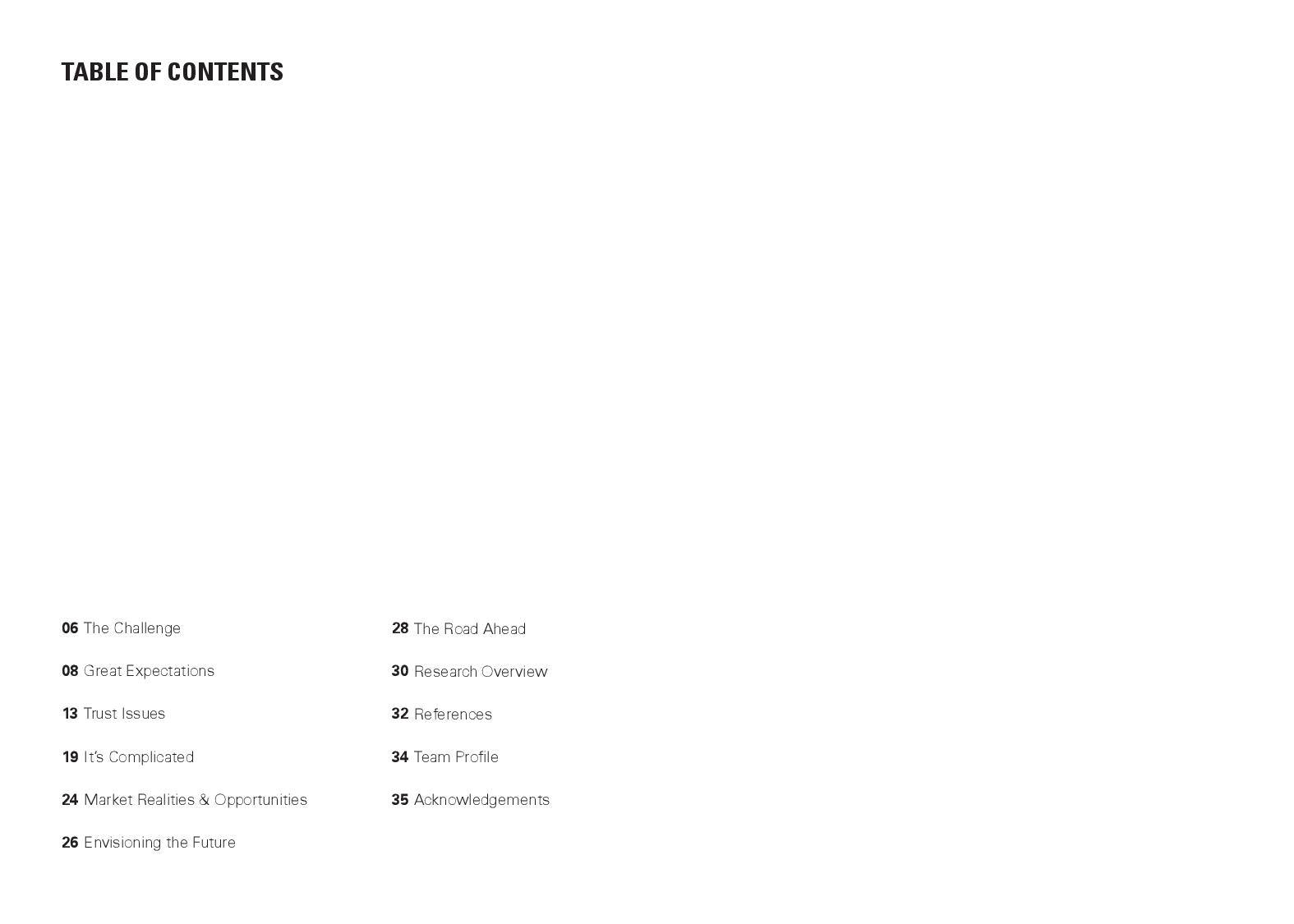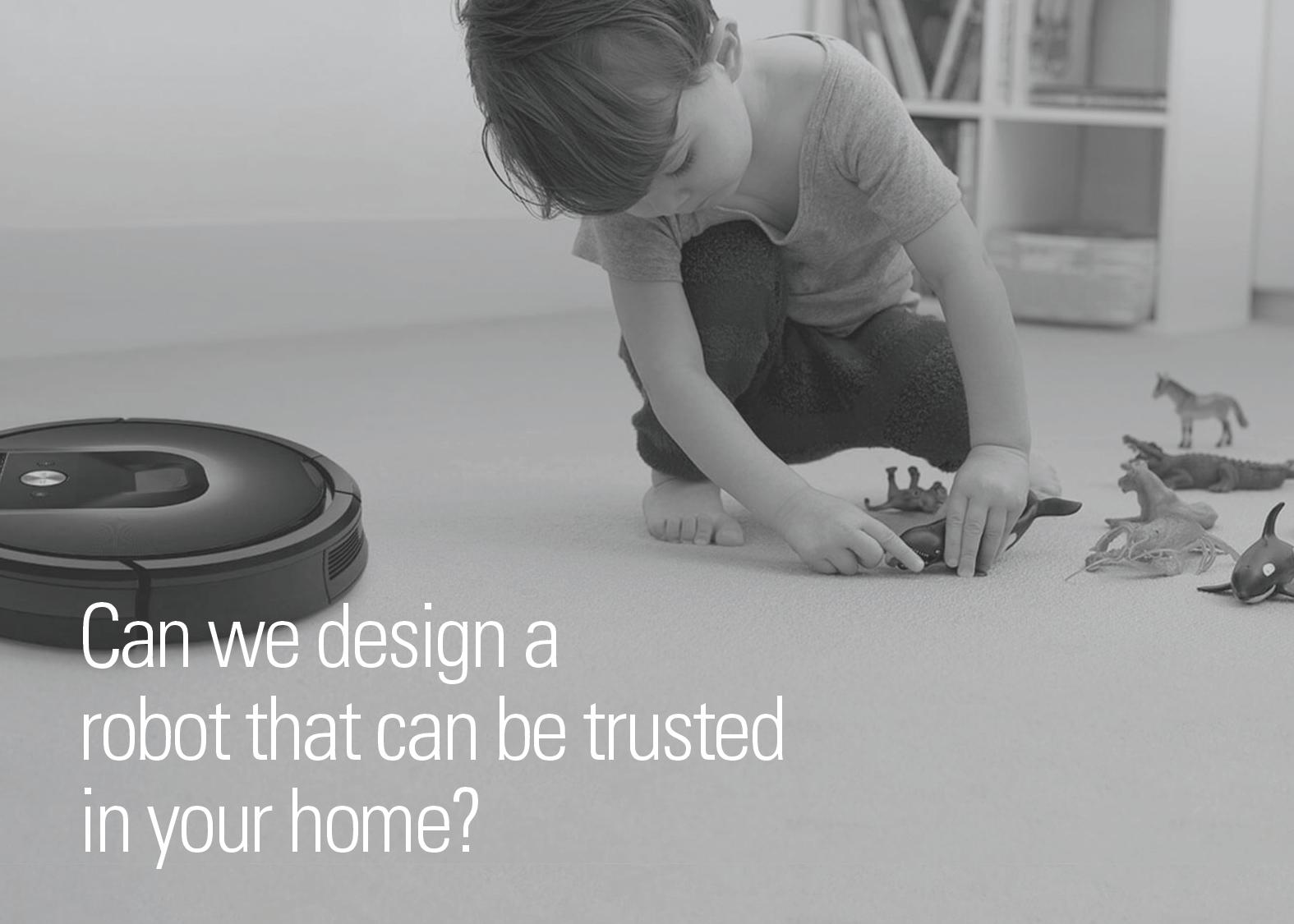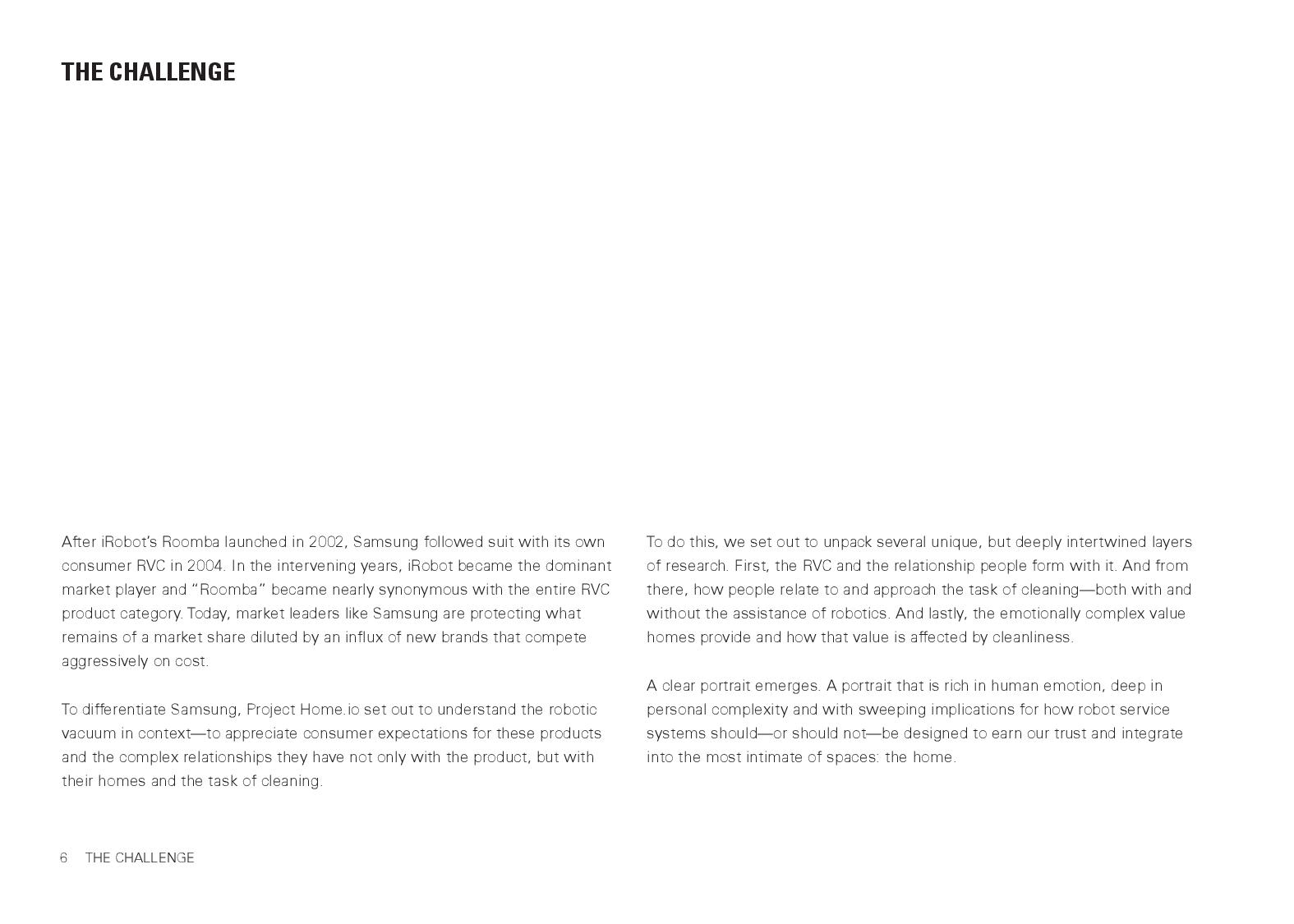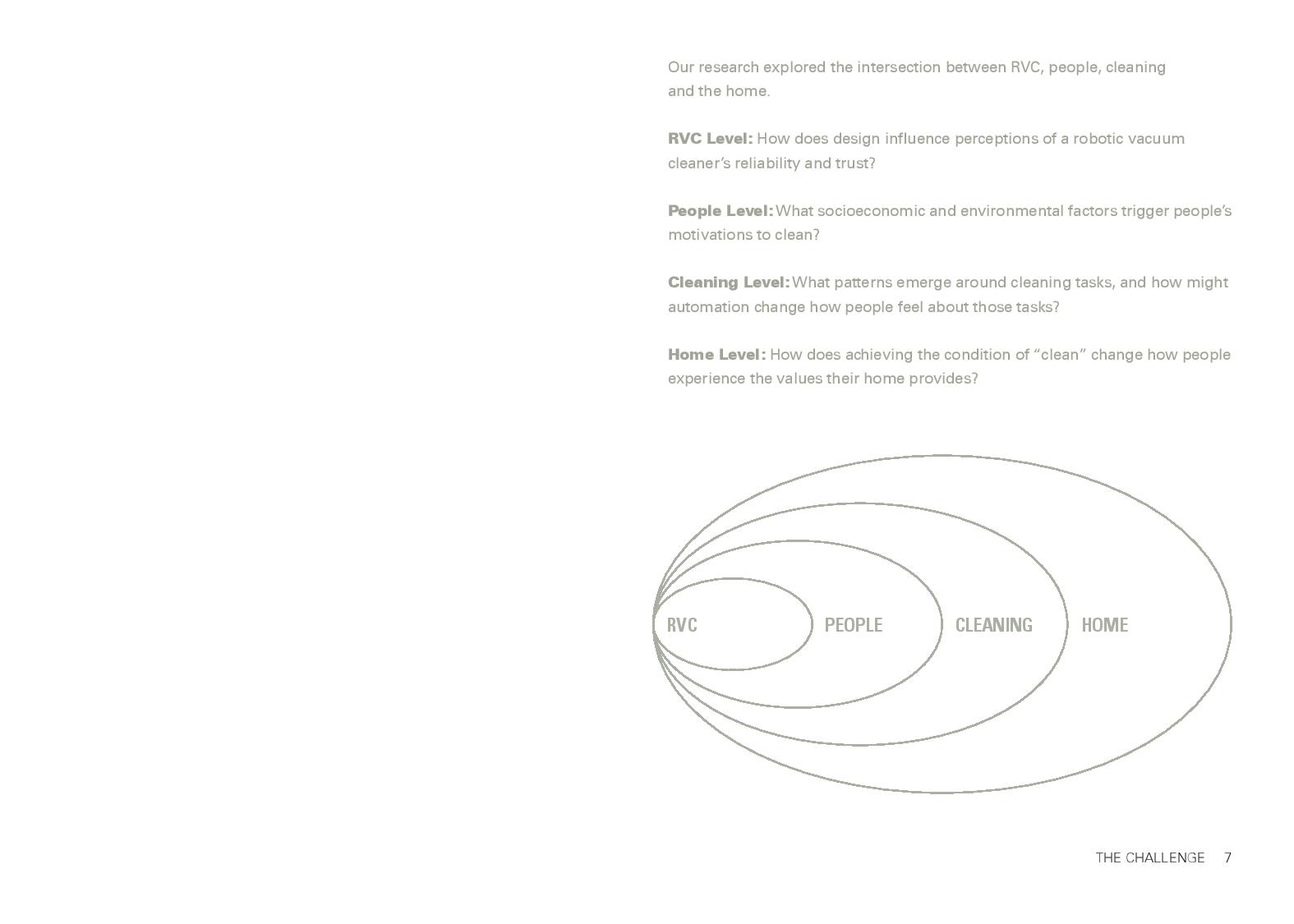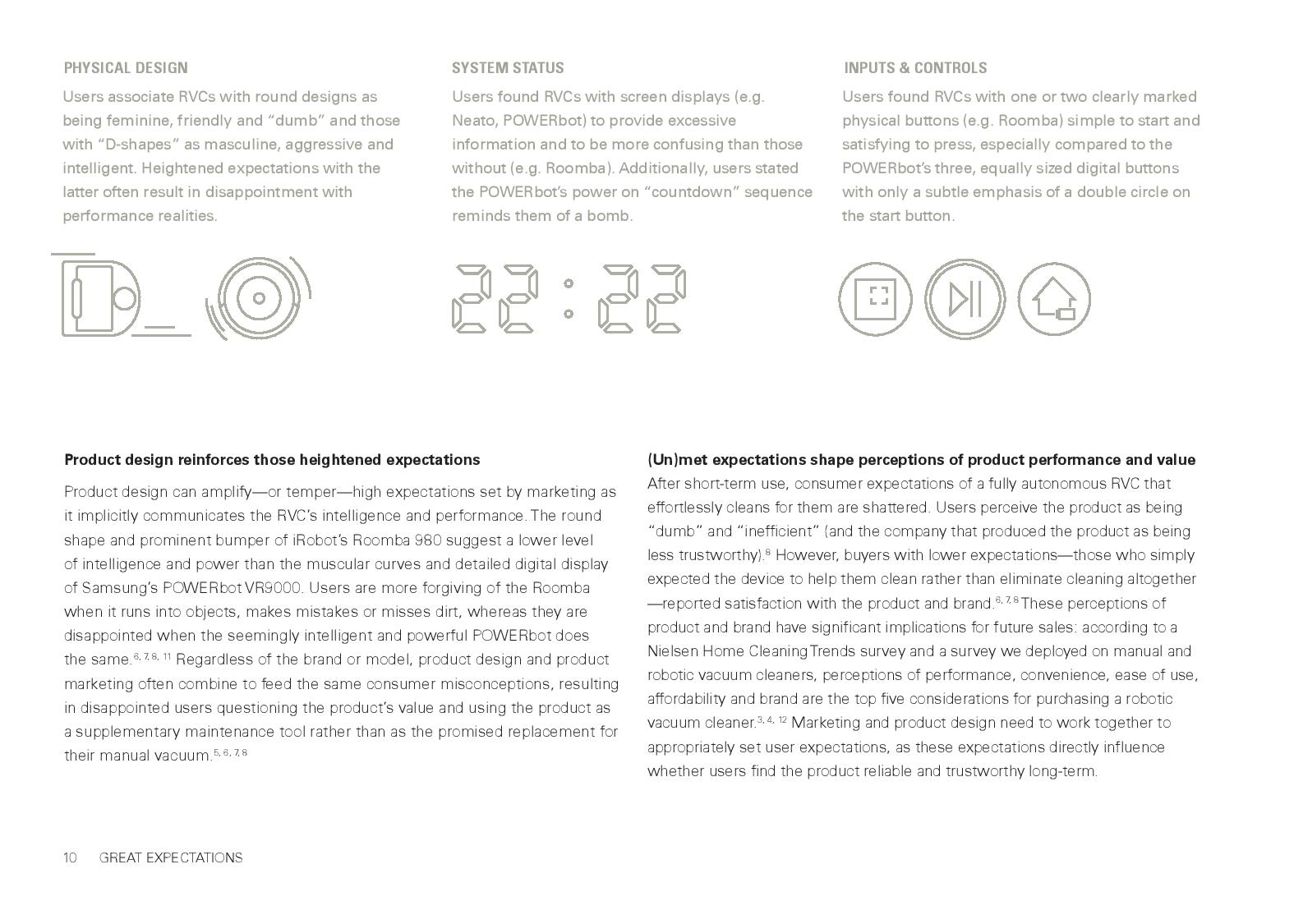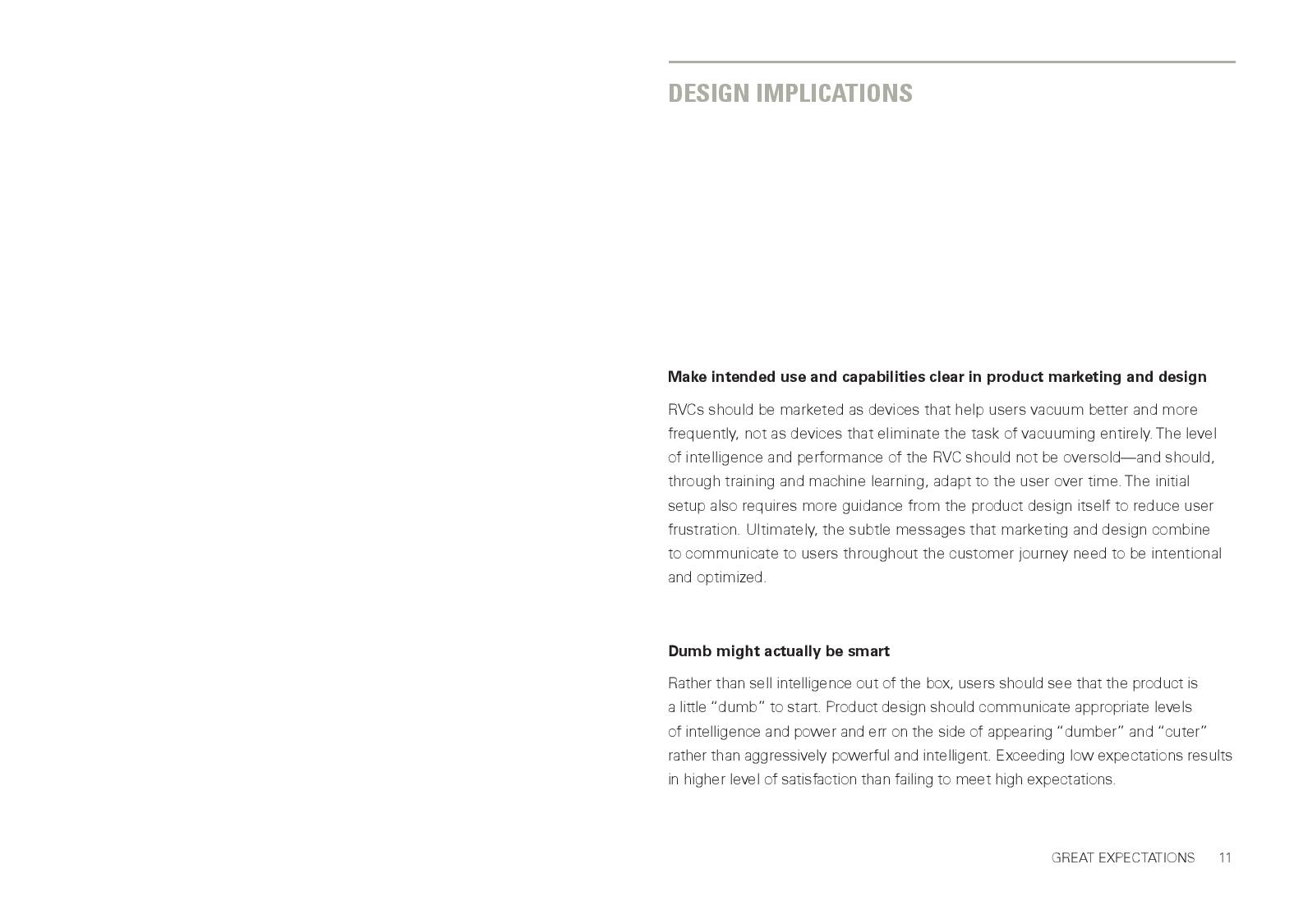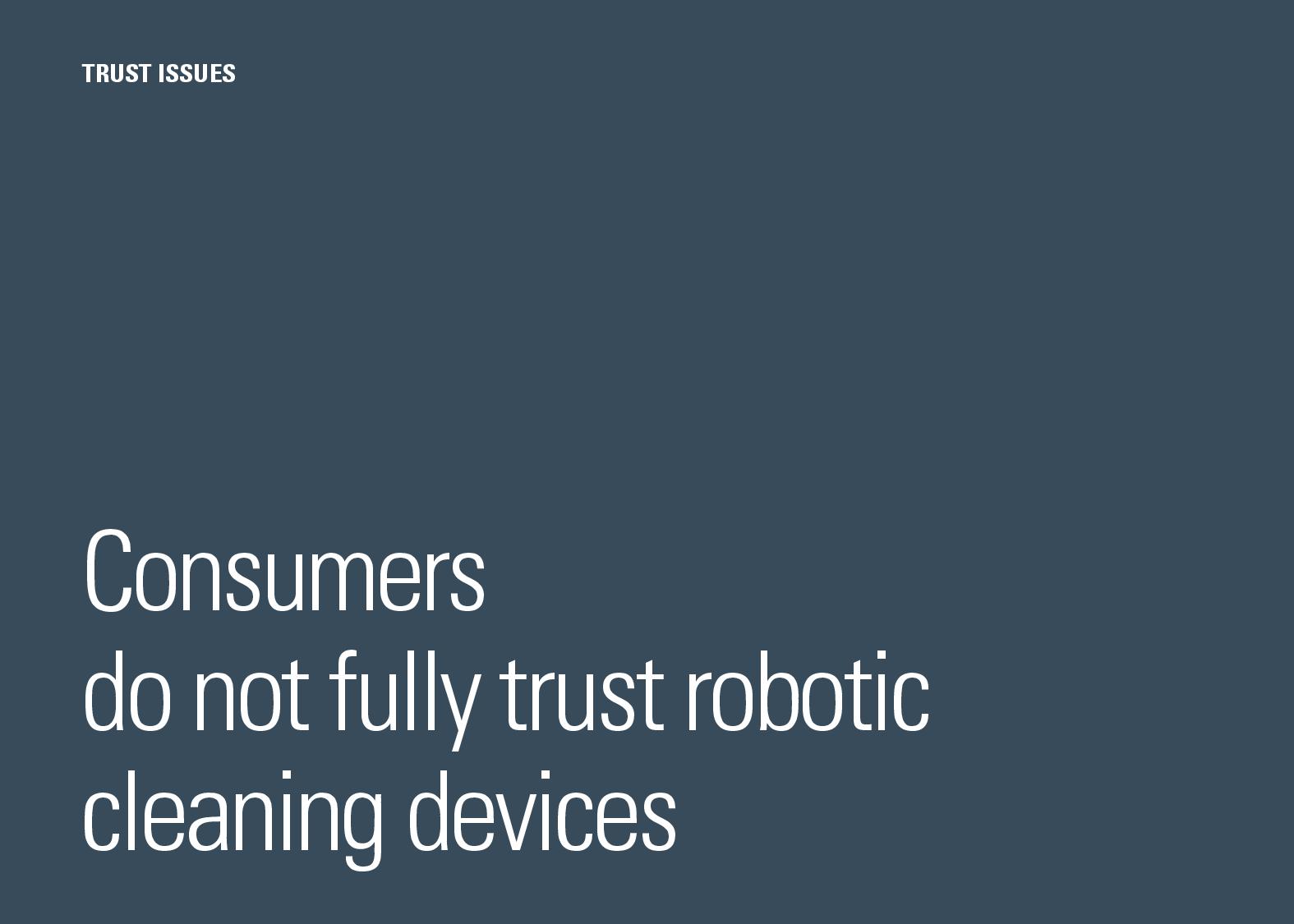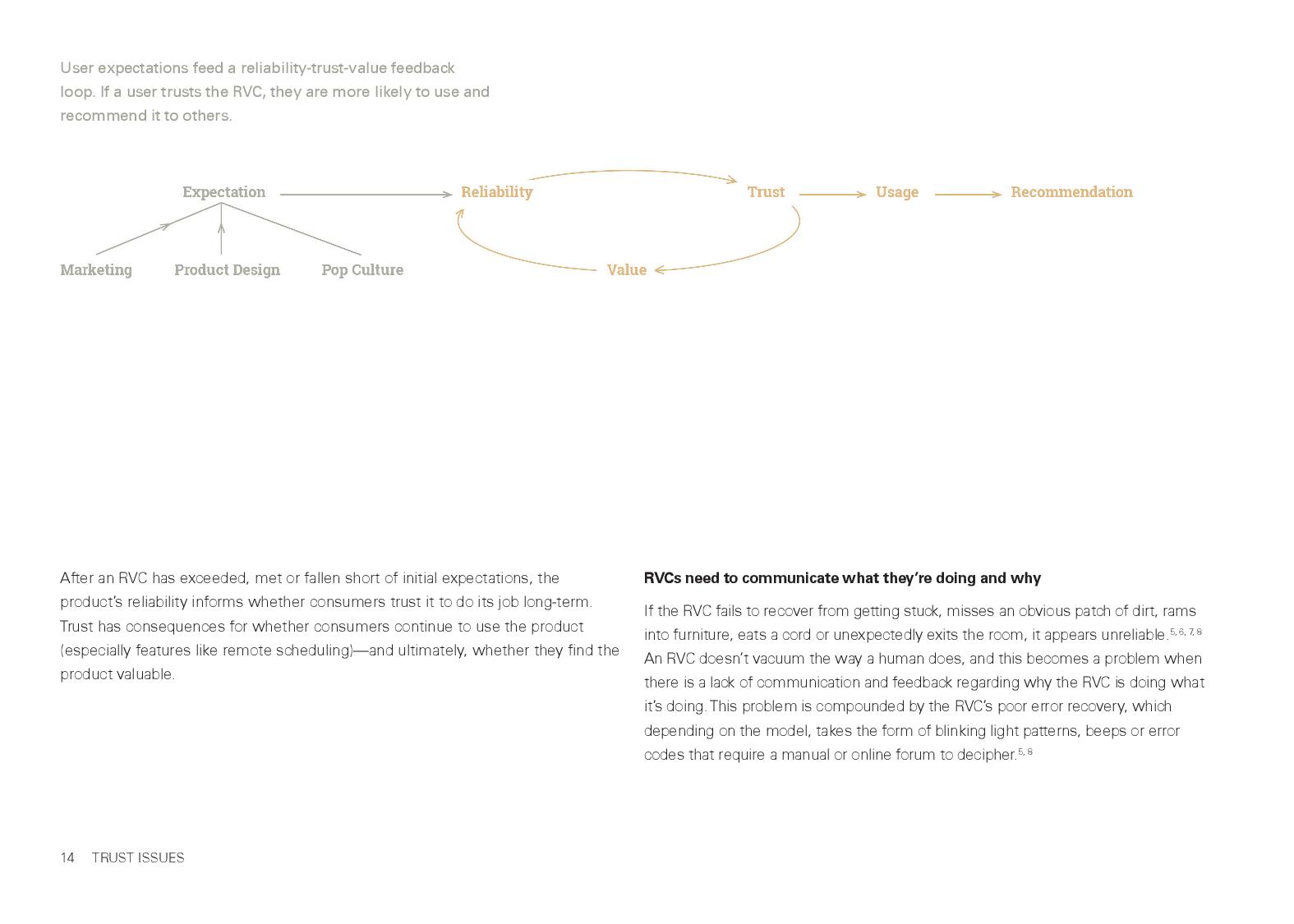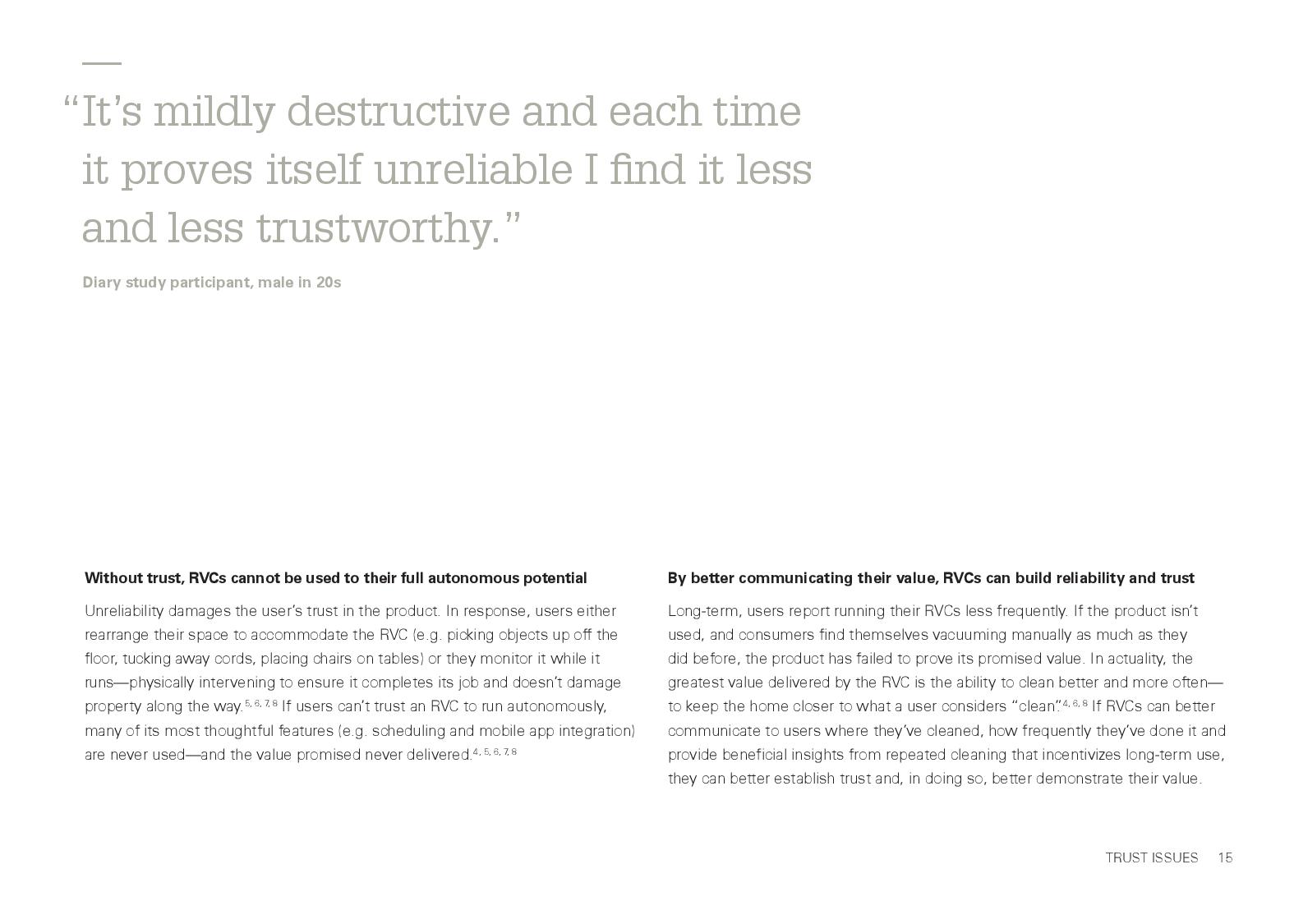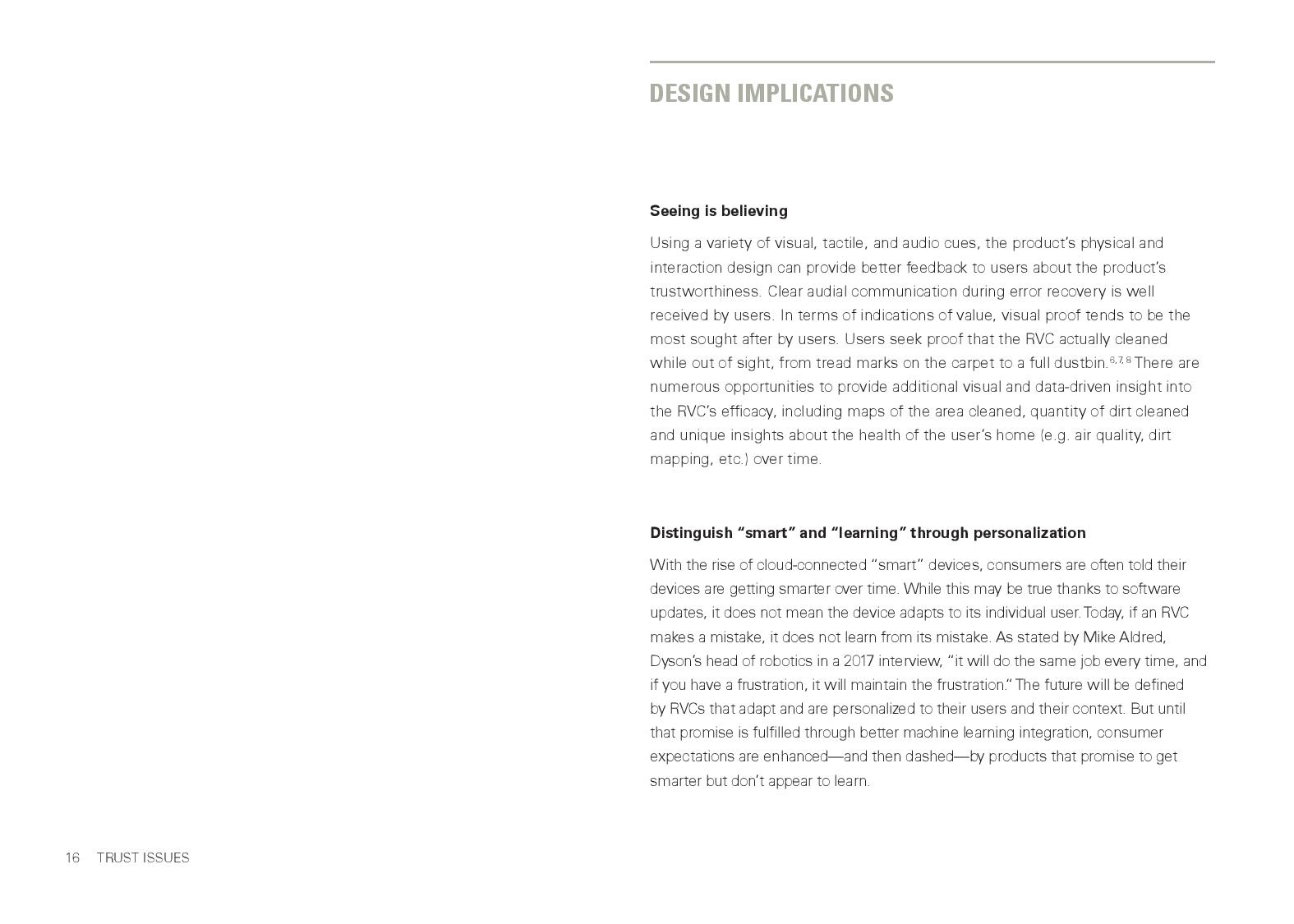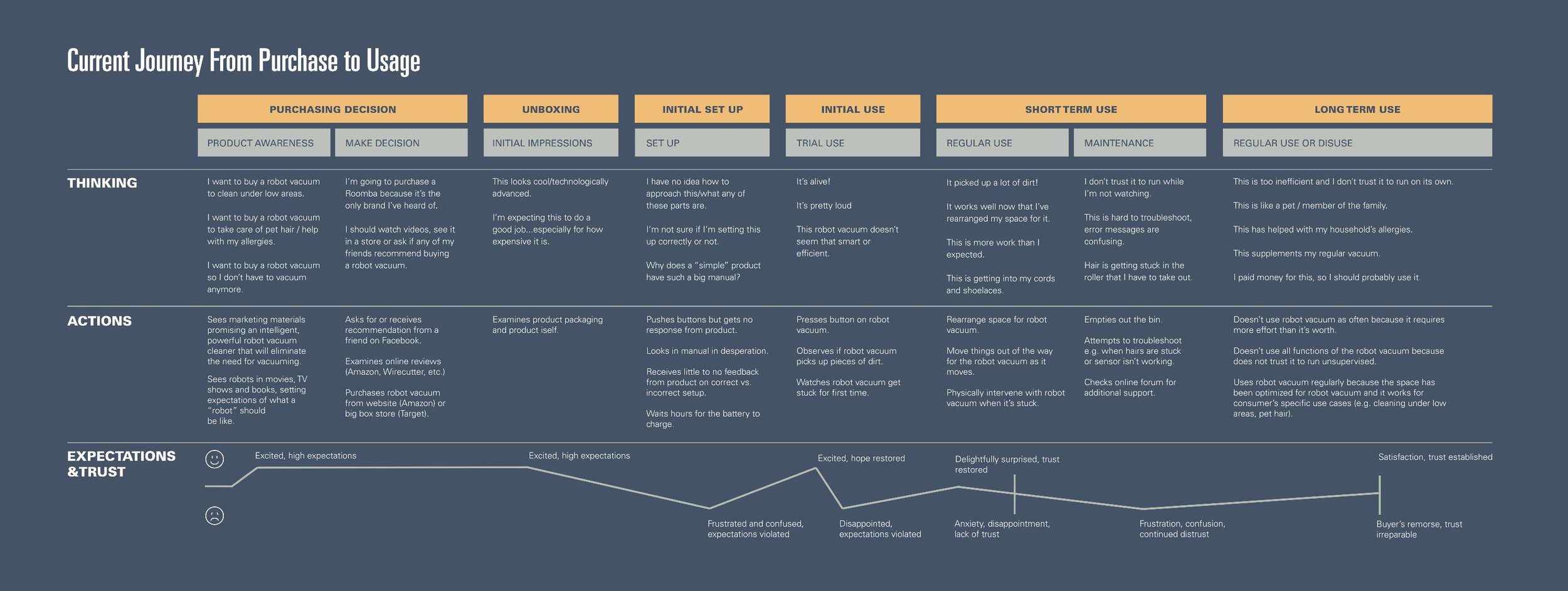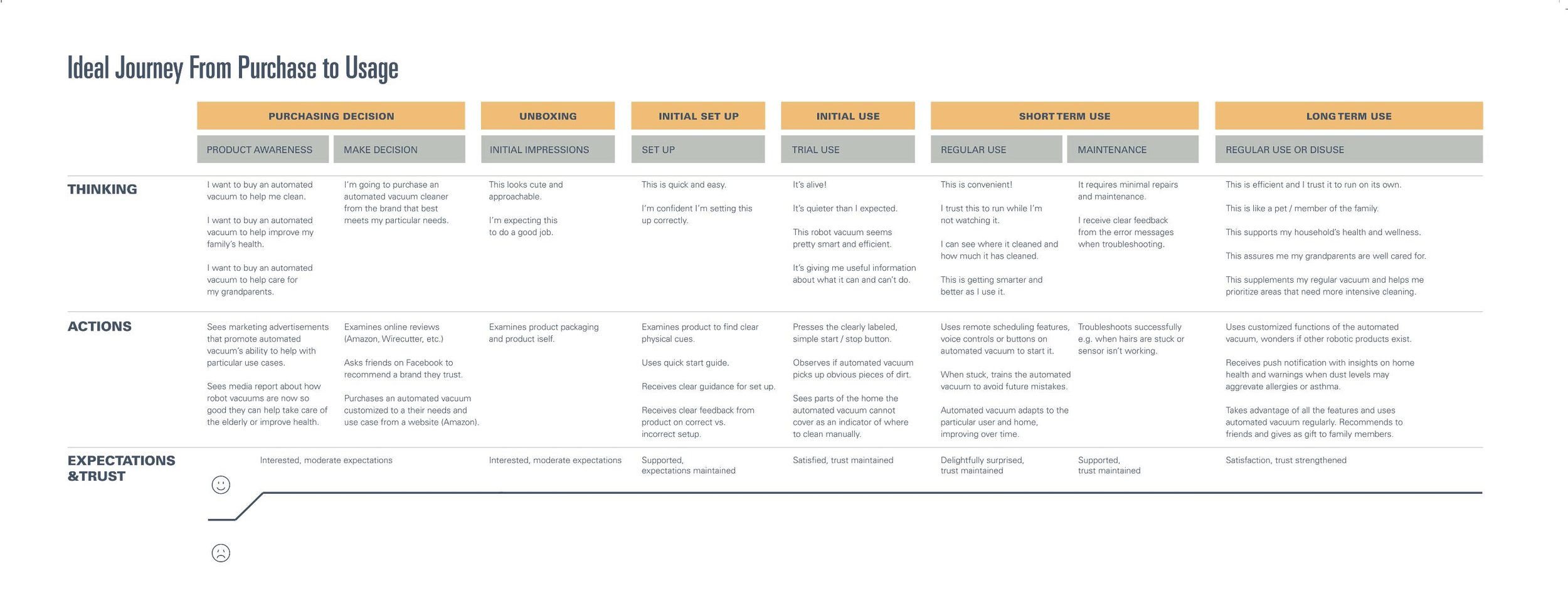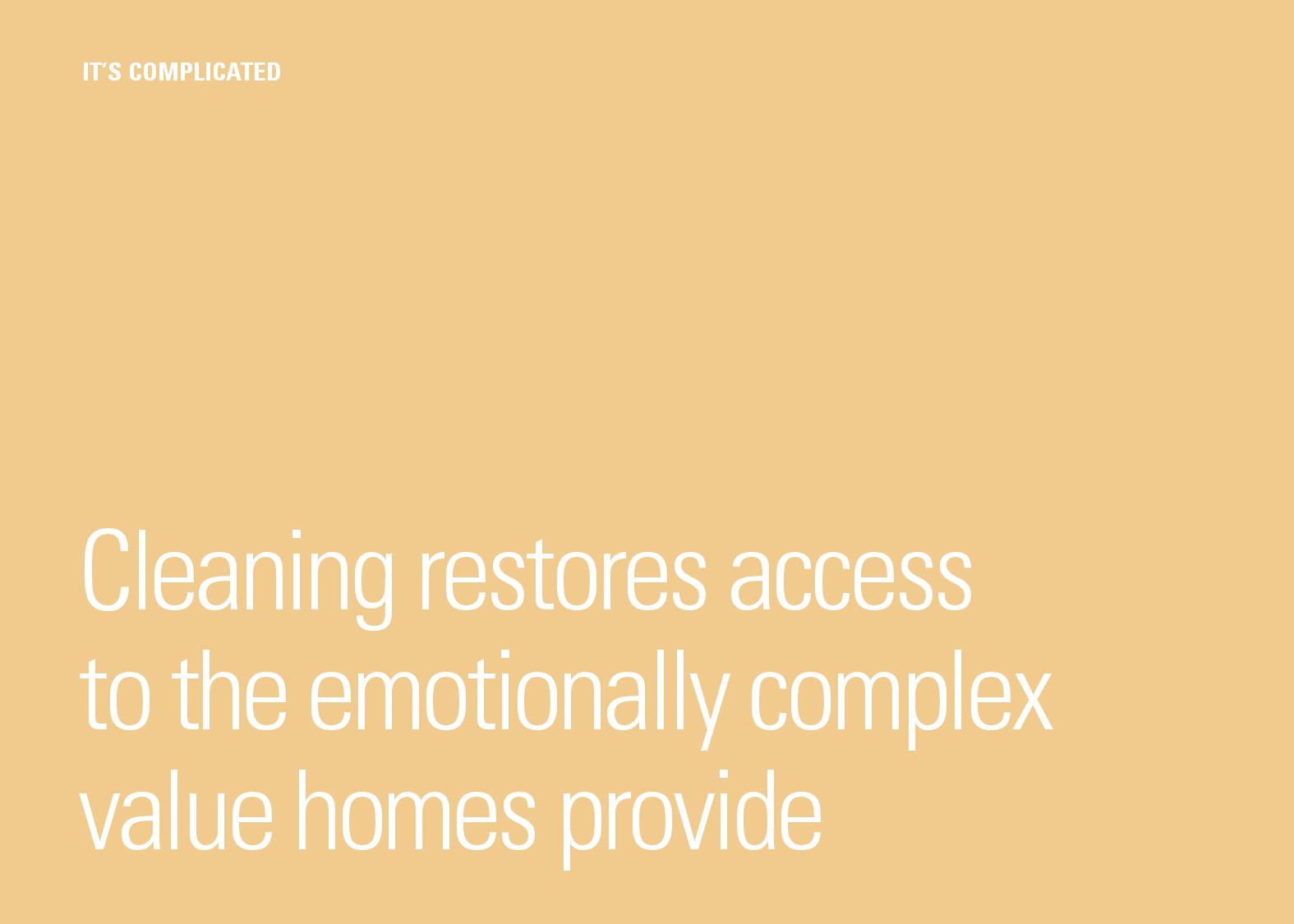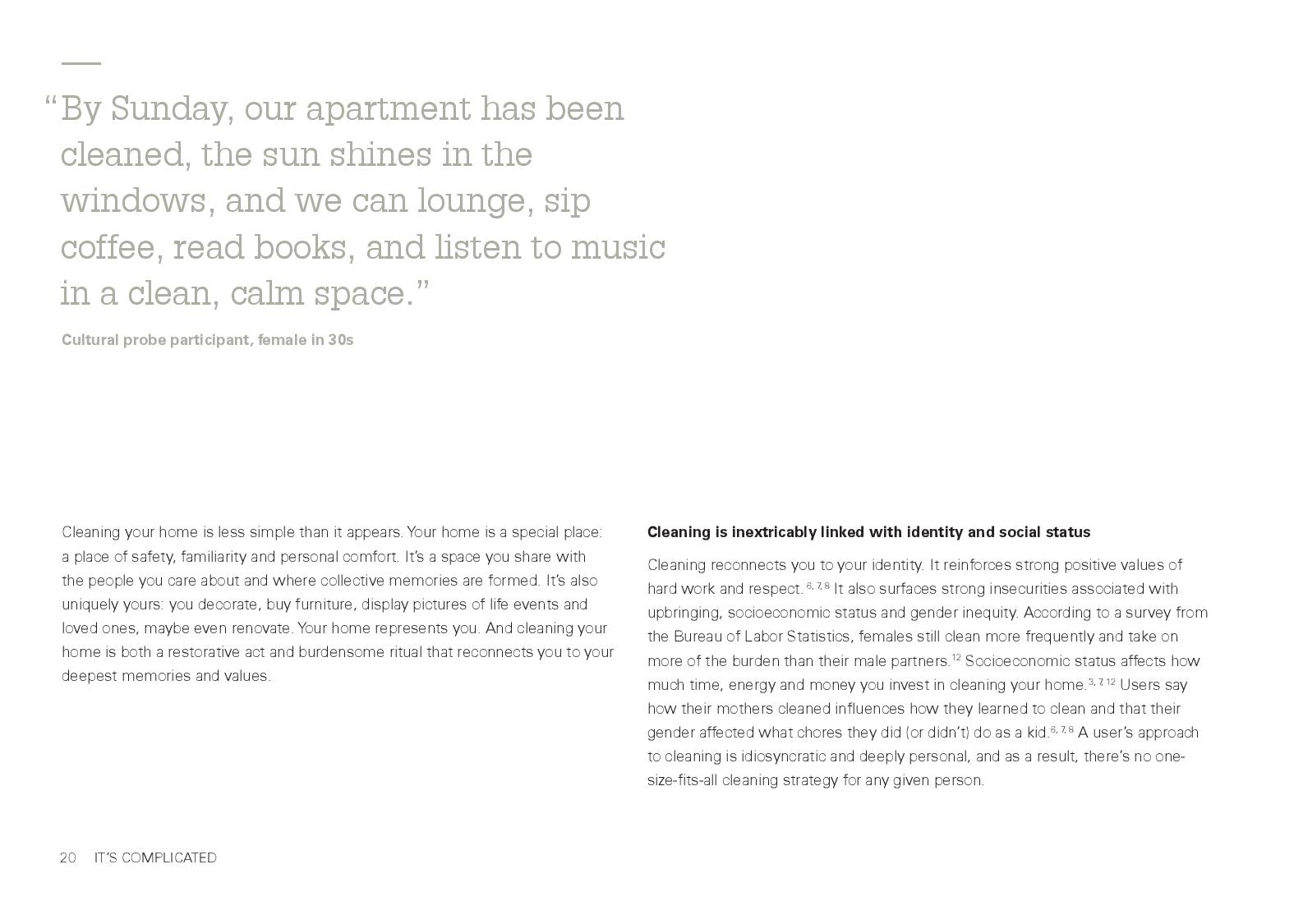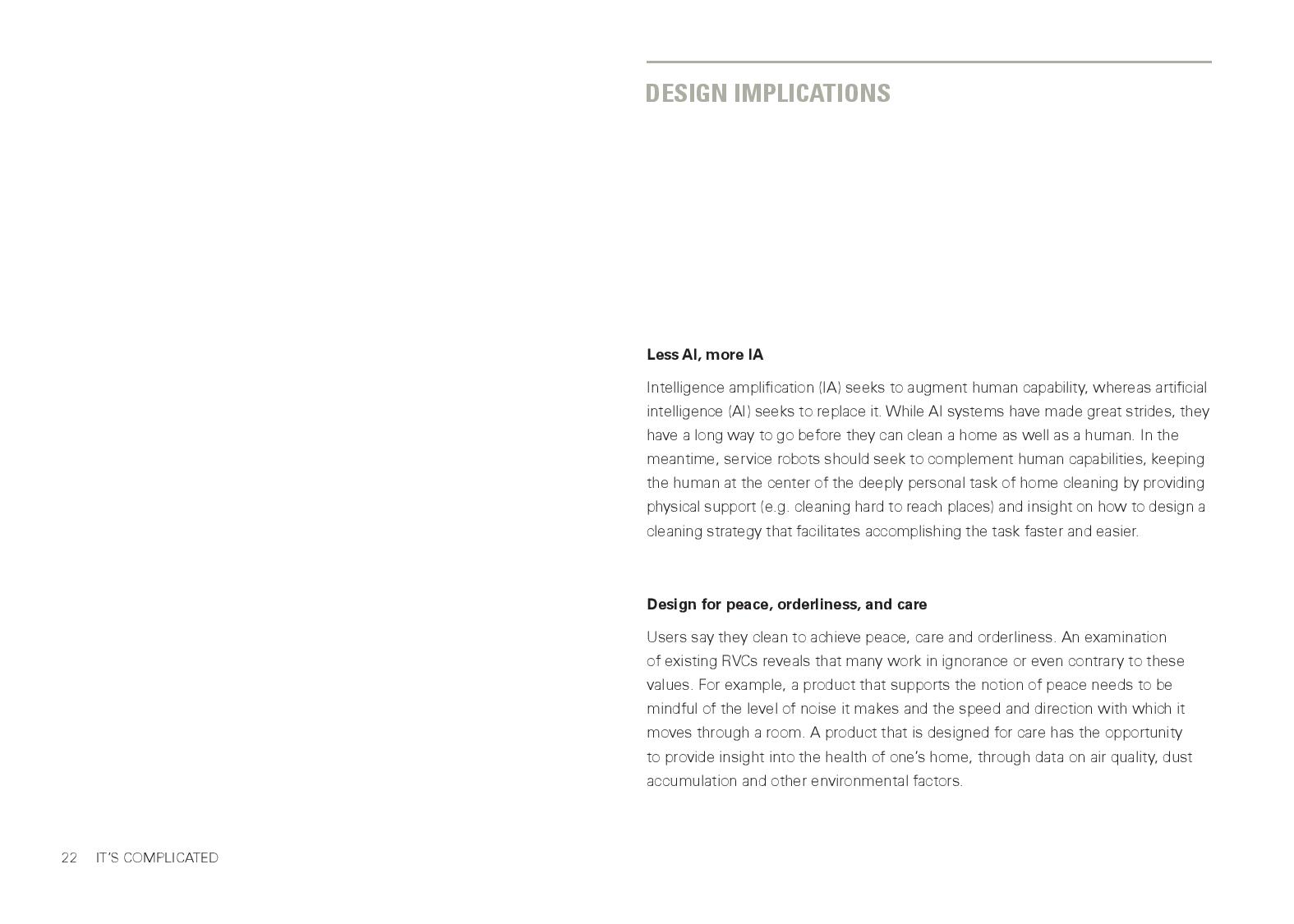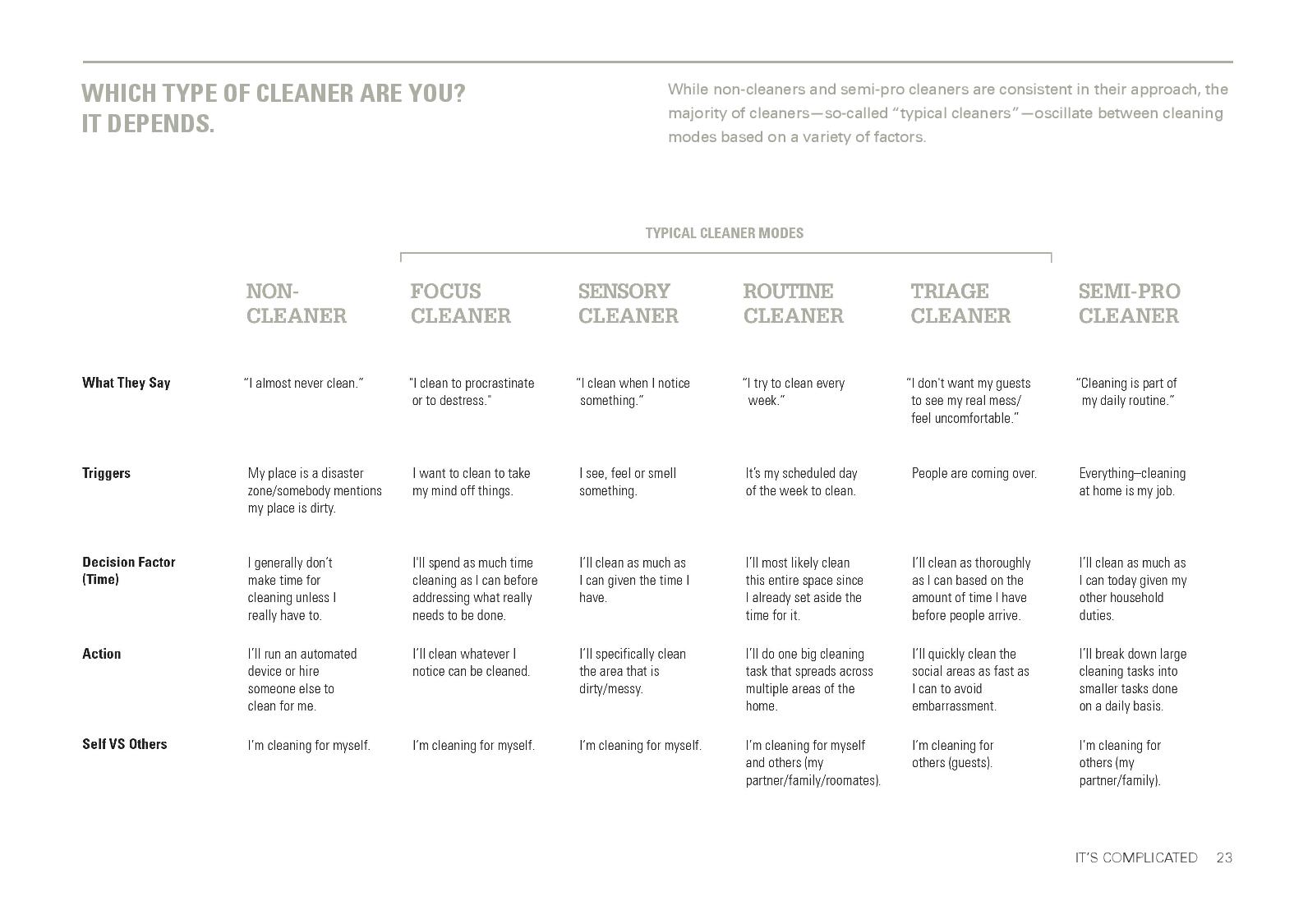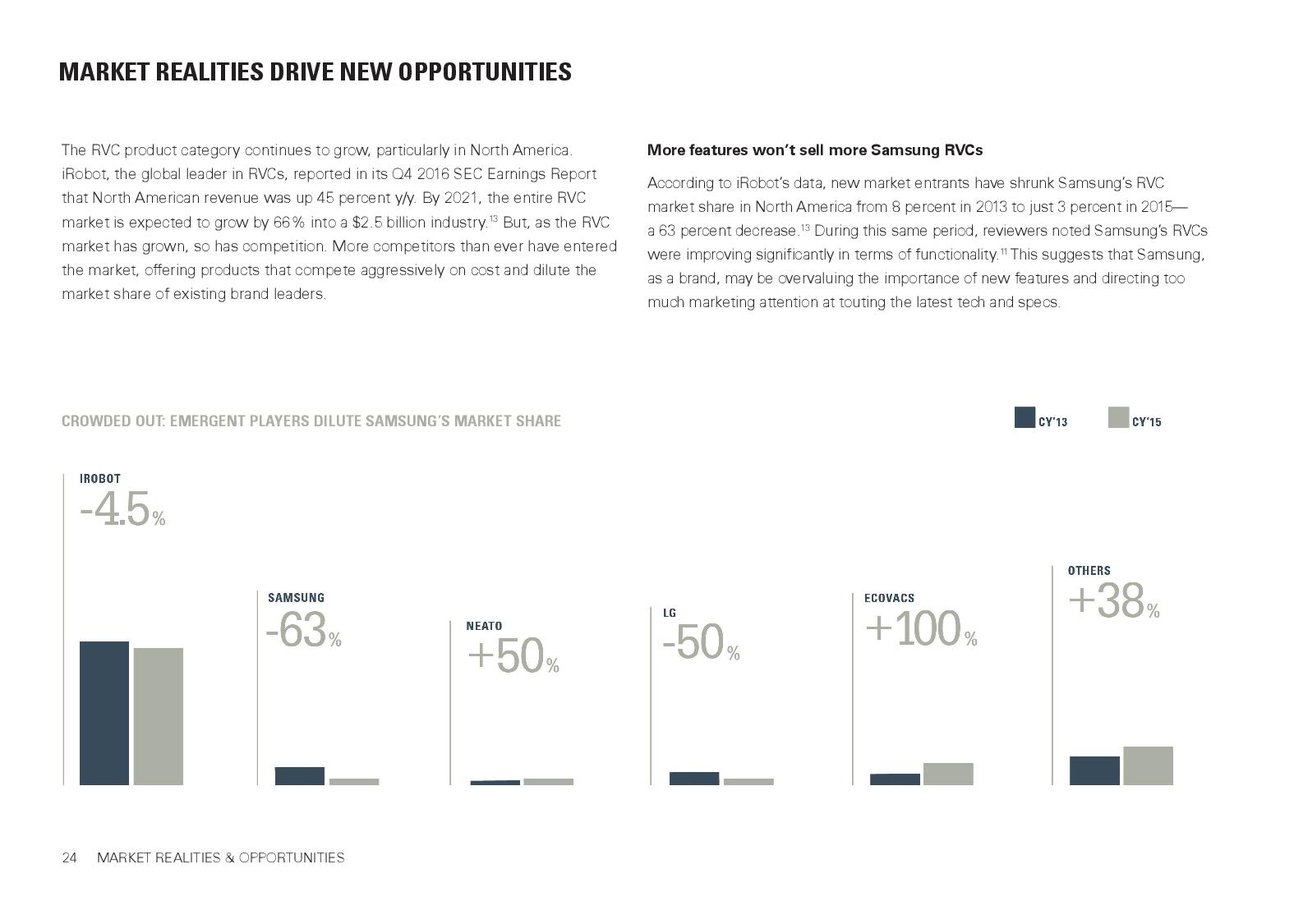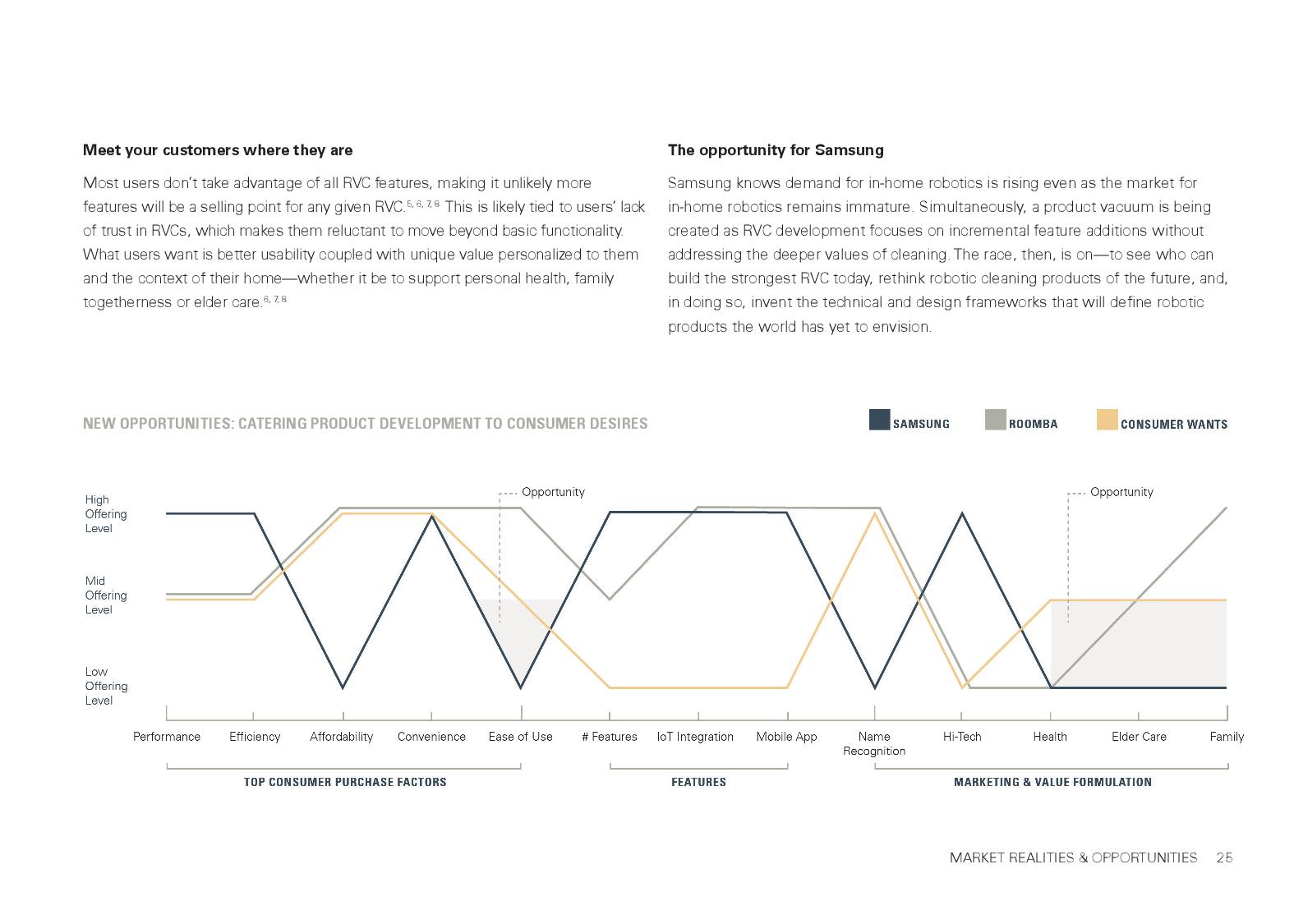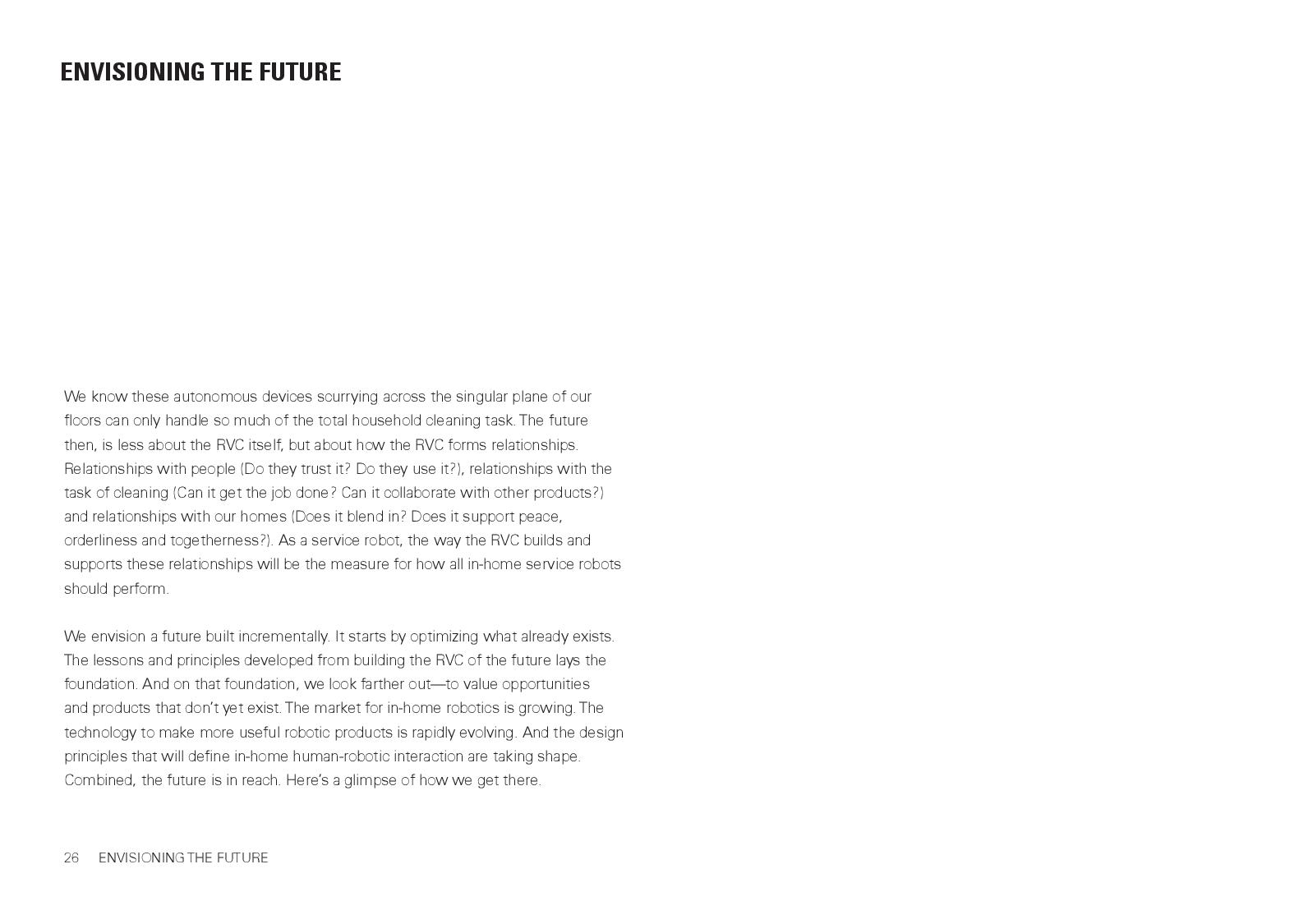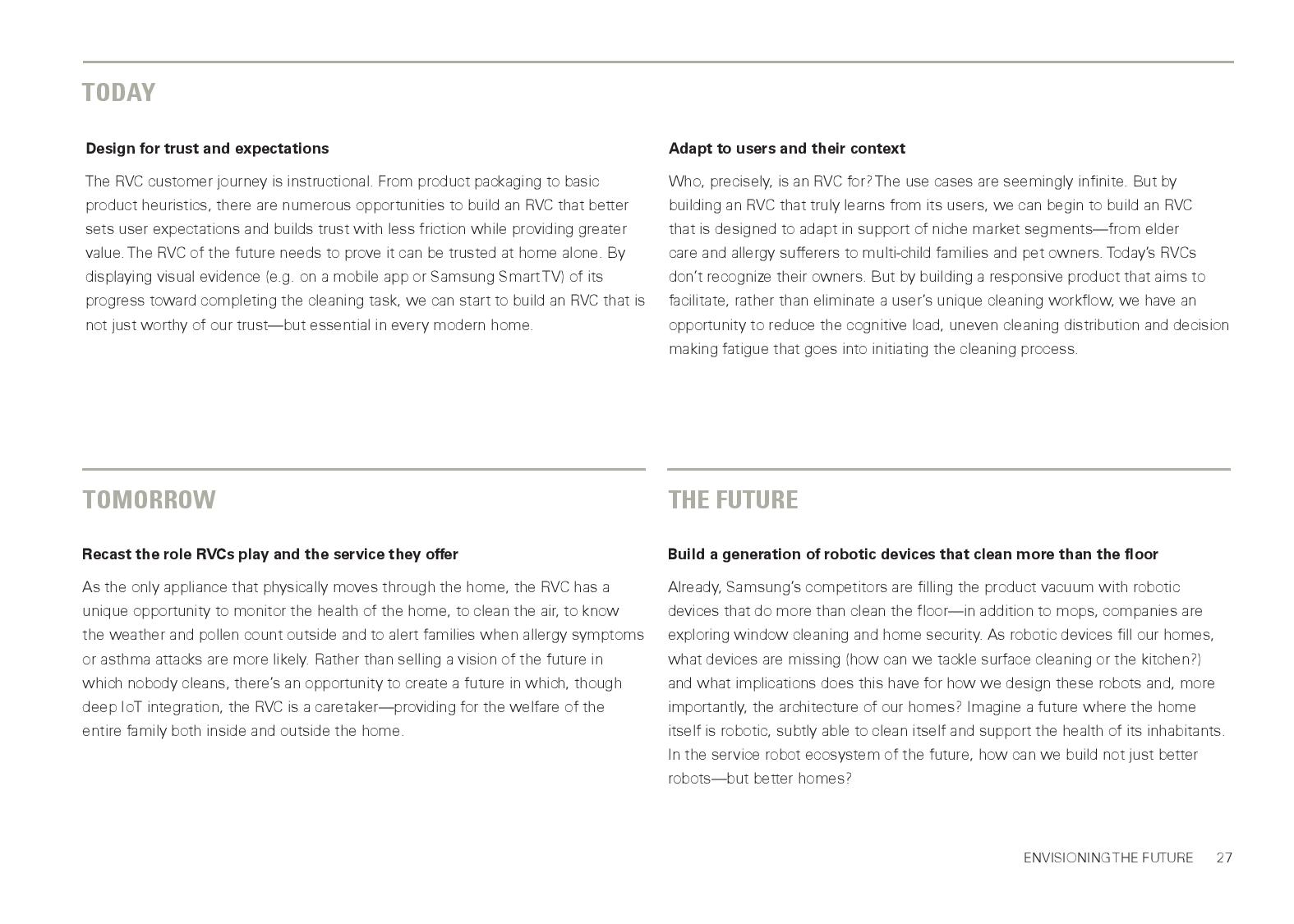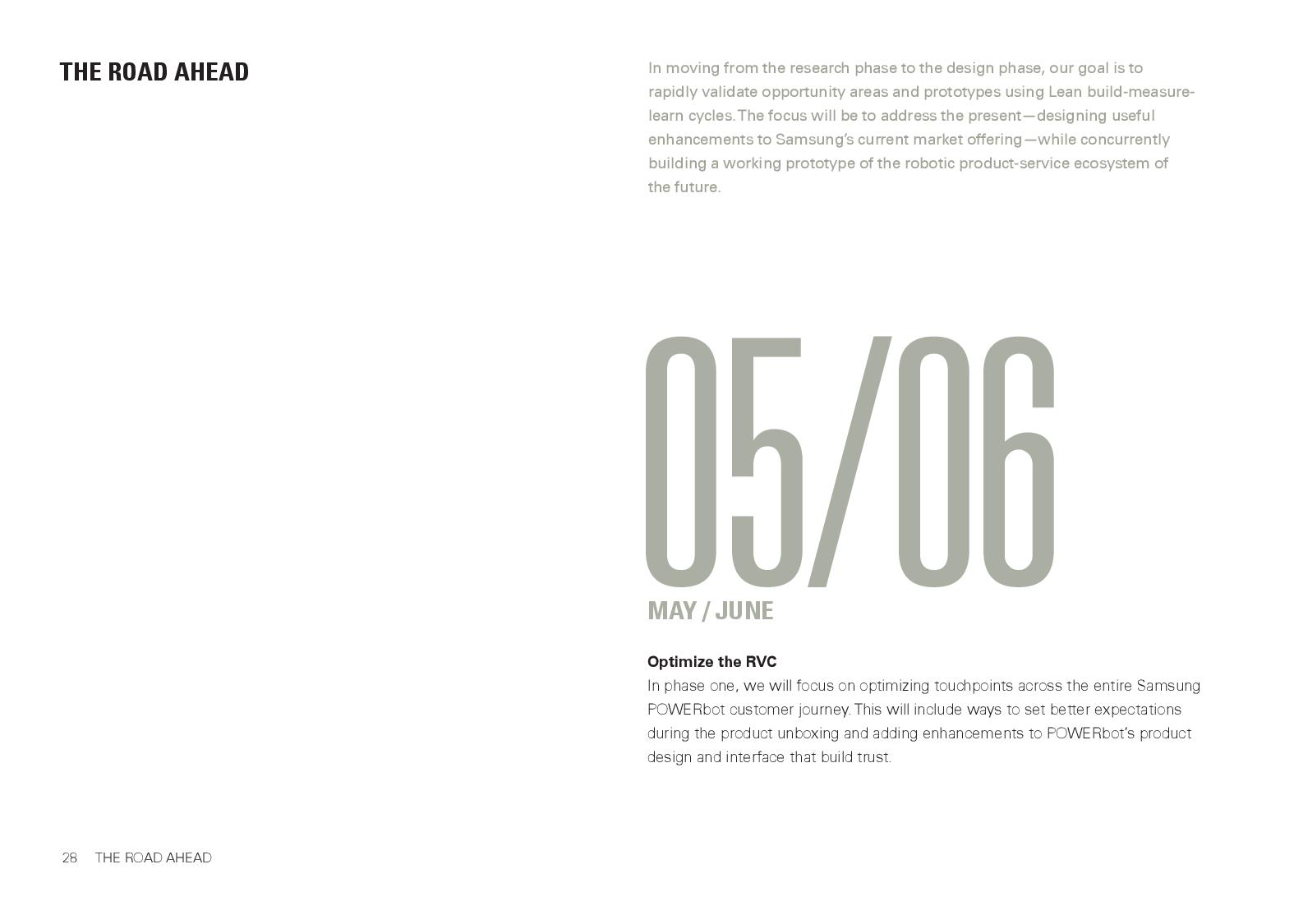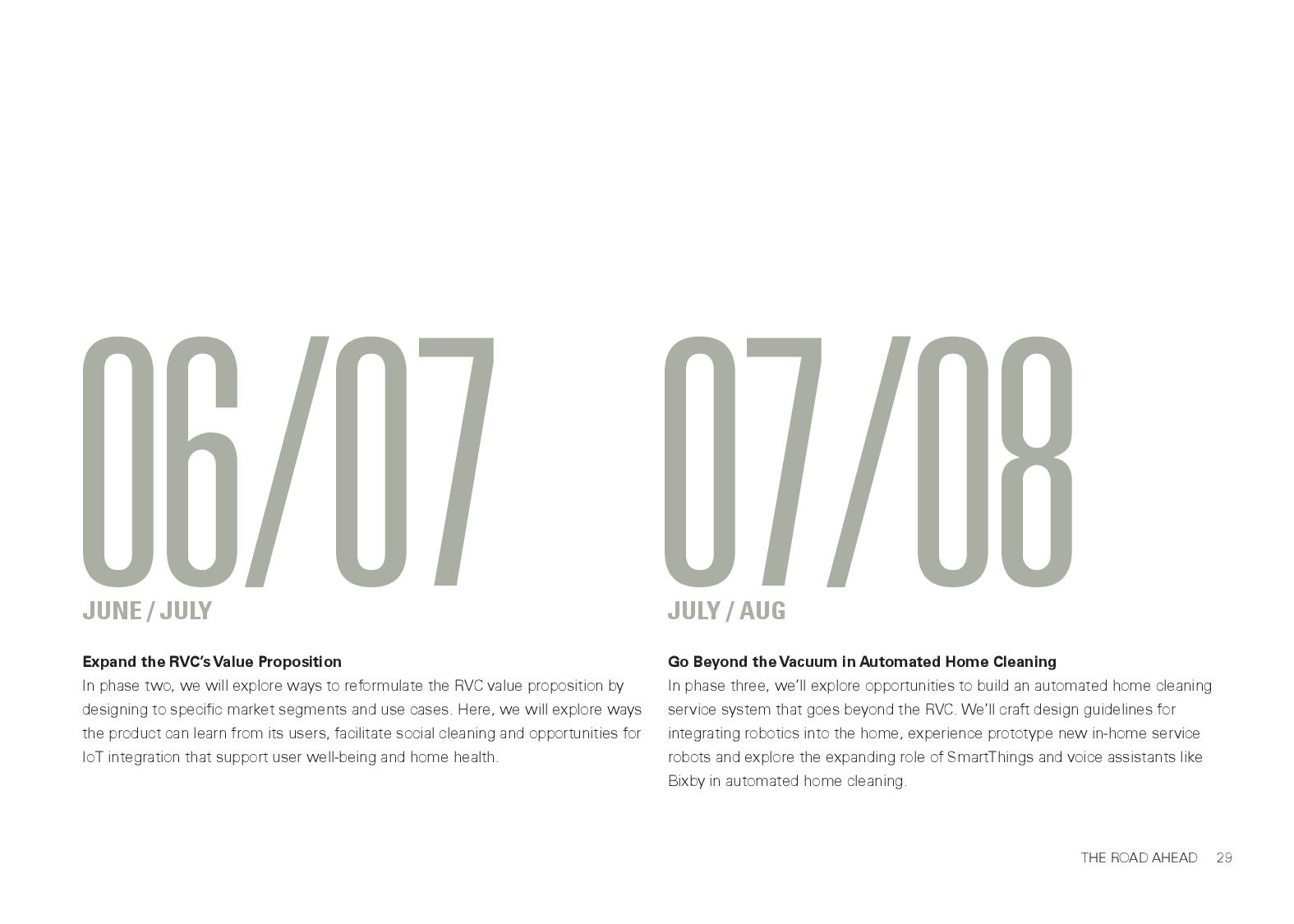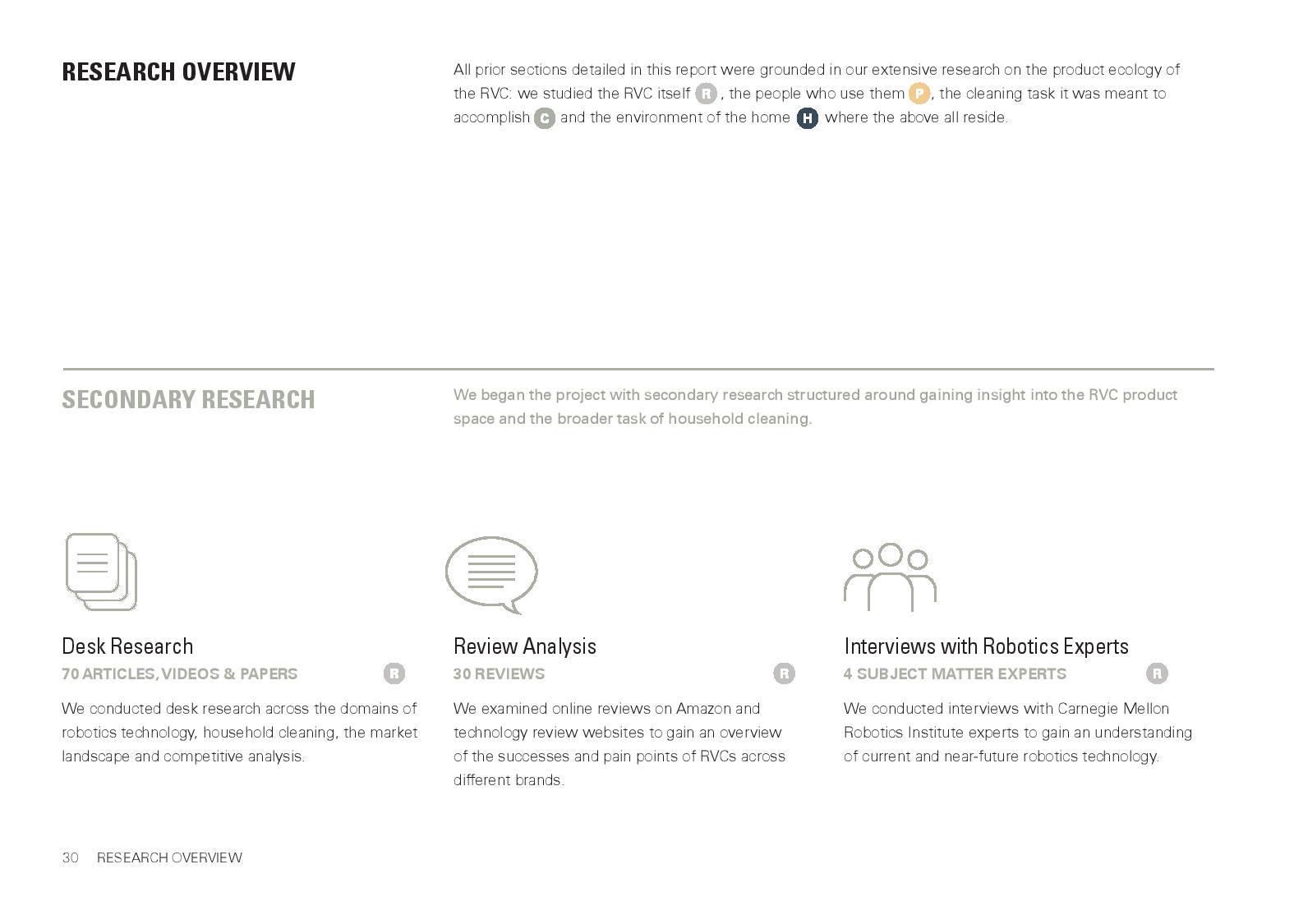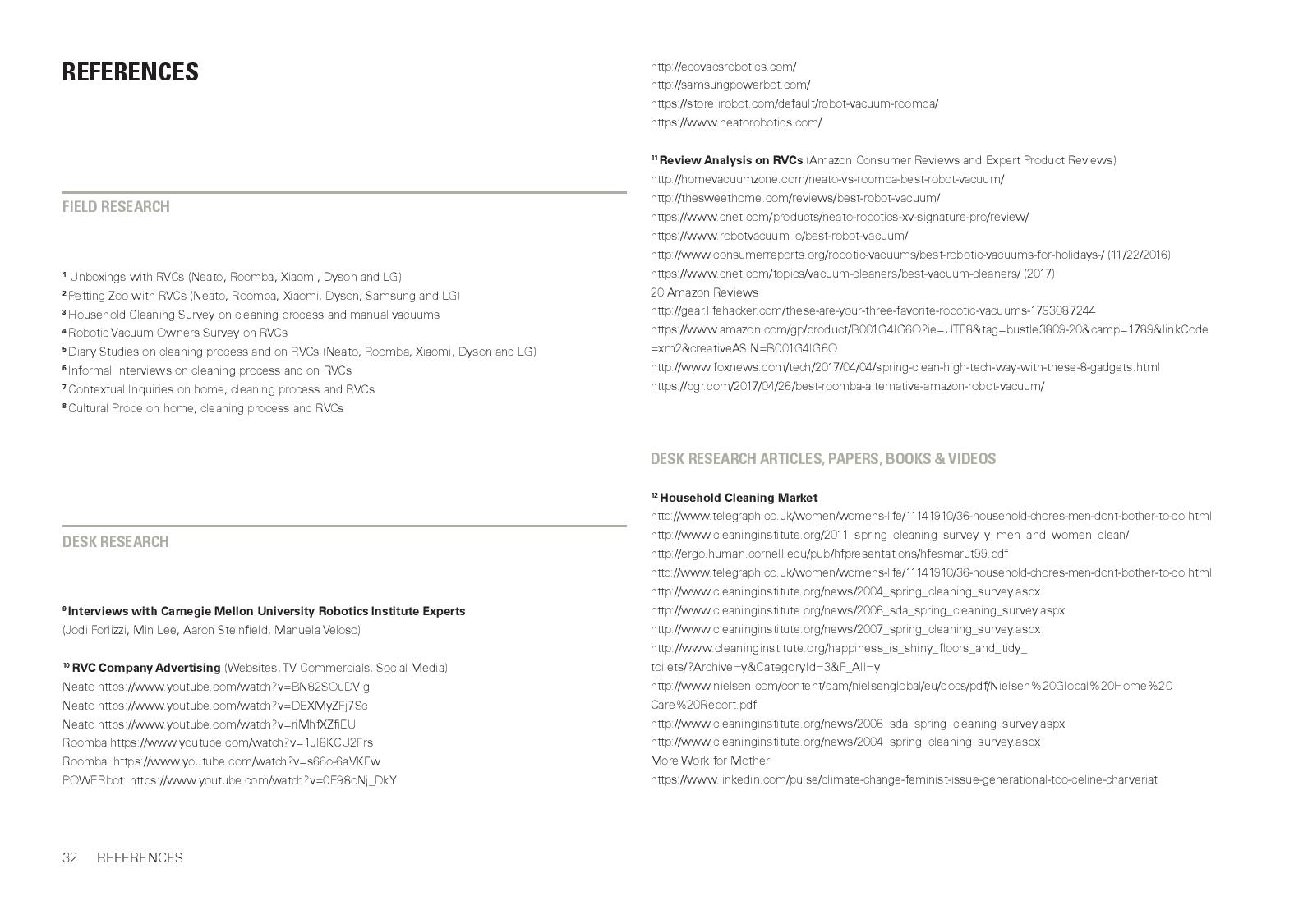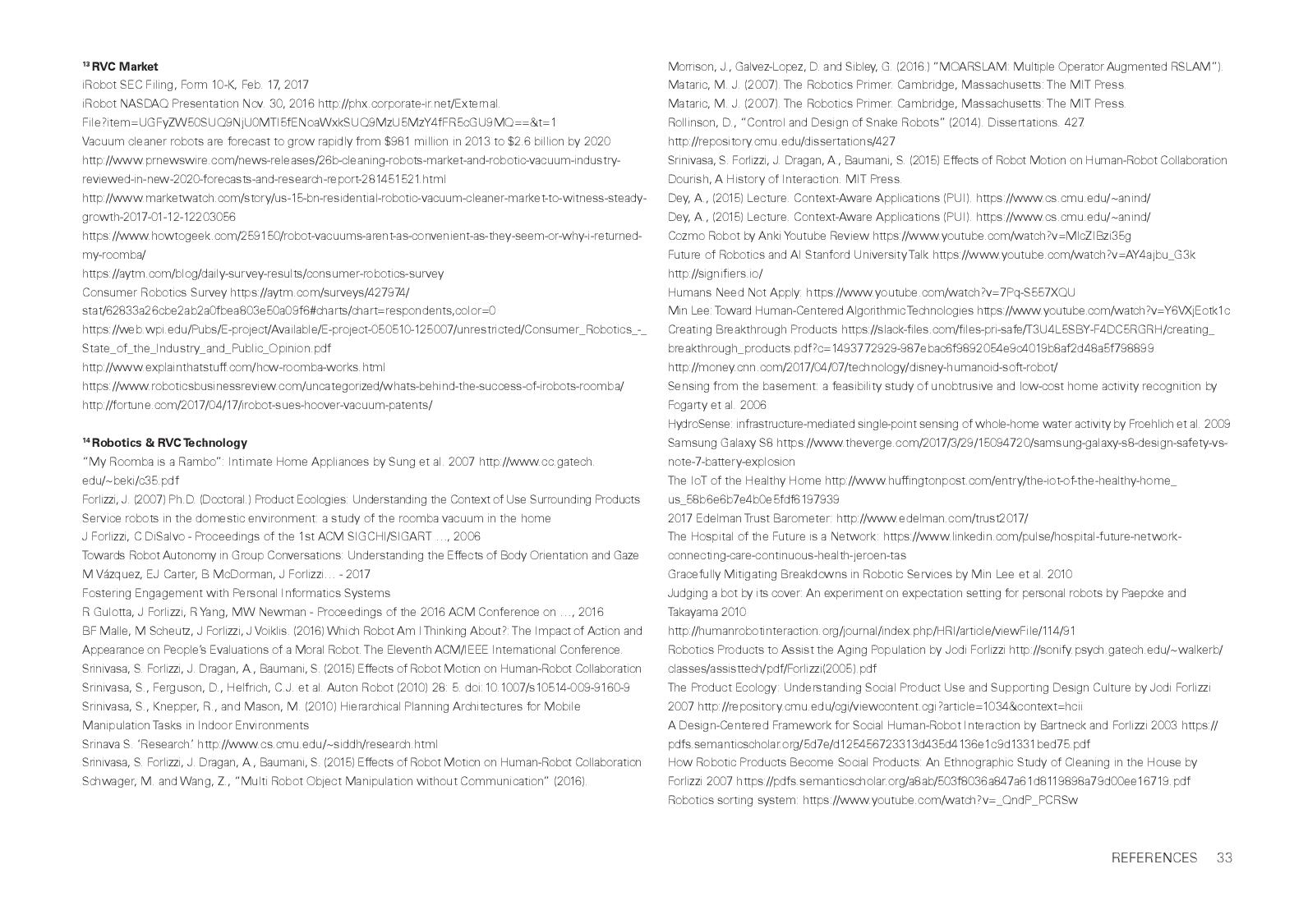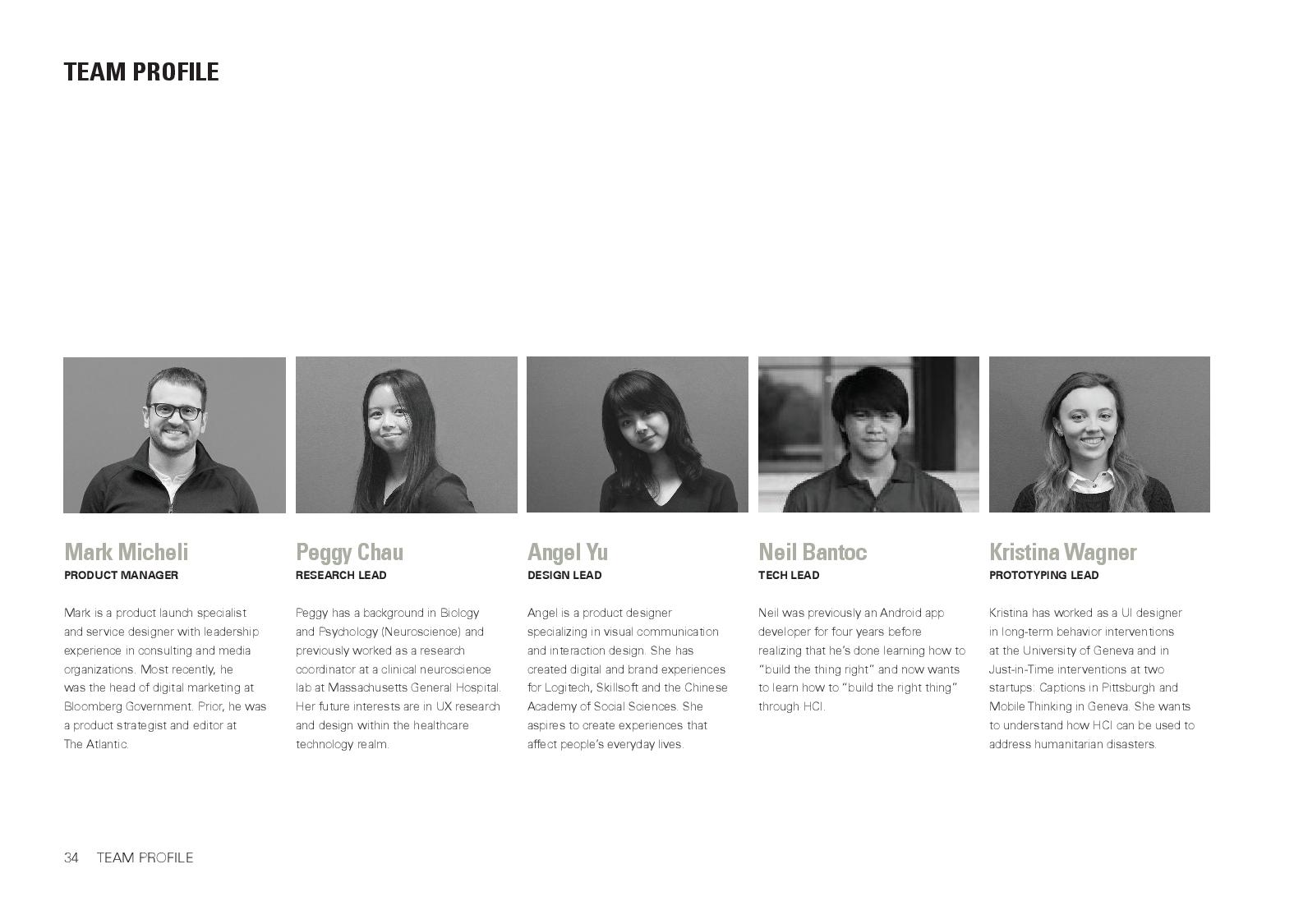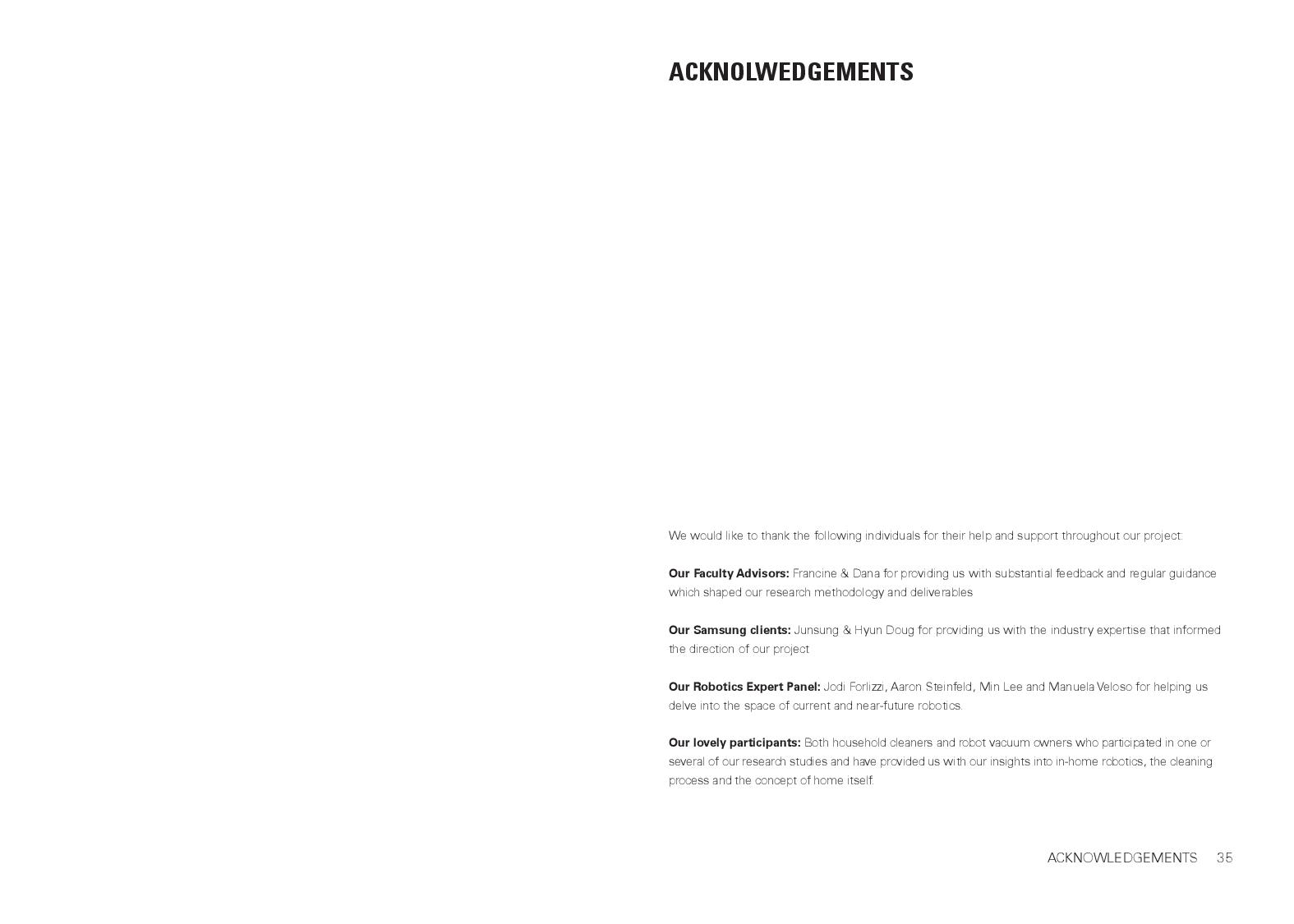Designing the Future of IoT and In-Home Robotics:
Samsung Electronics Digital Appliances Division
The Solution
After months in the field researching we switched to prototyping. We explored a range of design solutions, including conversational user interfaces, deeper IoT integration into Samsung's SmartThings environment and projection-based UIs. In the end, we attacked two core user needs: (1) communication and (2) control. We used light to build a robot vacuum that could clearly communicate what it was doing and why and a refined industrial design that gave the user deeper control of the device.
The Problem
Samsung Electronics came to us and asked us to find a way to make people more open to in-home robotics and automated home cleaning. We used the robot vacuum cleaner as a lens to understand the problem space, and studied ten different robotic vacuum brands in people's homes. We discovered people (1) have high expectations for the devices that go unmet, (2) that people don't trust the devices and (3) that the robot carries the complex burdens people associate with cleaning.
Fast Facts
- My Role: Product Manager & Service Design Lead
- Timeline: 9 months (January - September 2017)
- Teammates: Angel Yu (Design Lead), Peggy Chau (Research Lead), Neil Bantoc (Tech Lead), Kristina Wagner (Prototyping Lead)
- Stakeholders: Head of Design and UX Strategy Lead for Samsung Electronics Digital Appliances Division
- Skills: Research (Ethnographic + Guerrilla), Prototyping, and Product Design/Management
- Users: Robotic vacuum cleaner purchasers in North America
"So you're redesigning a Roomba?"
Understanding the robot vacuum in its service context
Reaching commercial viability in 2002 with iRobot’s Roomba, robotic vacuum cleaners (RVC) continue to represent the first encounter many of us have with a robot. Meaning, before they ever have the chance to prove they can clean our floors, they must first live up to what we believe a robot should be. That’s a lot of pressure for a vacuum cleaner. Before ever encountering an RVC, consumer expectations are heightened by what pop culture mainstays like Rosie from “The Jetsons” or R2-D2 from “Star Wars” have told them a robot should be—intelligent, personable, adaptive—which are further accentuated by marketing promises of superior navigation, autonomy and increasing intelligence over time. Promises that often don’t hold up.
What we were promised a robot servant would be like...
...versus the harsh reality of how robotic vacuums actually perform.
From product marketing to product design, every subtle touchpoint shapes consumer expectations. For more than a century, advertisers have sold the promise of new appliances, from washers and dryers to freezers and microwaves, with the power to free us from the menial tasks and inconveniences of domestic life. Today, that promise manifests itself in robotics.
These hockey puck-like devices have patrolled a two-dimensional plane in the homes of those brave enough to try them for more than 15 years. Fighting, as the lone appliance that physically moves through our homes, a perpetual battle for “clean.” But vacuums won’t be the only robot consumers invite into their homes for long. According to research firm Future Market Insights, by 2021 the RVC market is expected to grow 66 percent to $2.5 billion. As demand for in-home robotics grows, a void of useful products emerges. In this product vacuum, human-robot interaction will be the crucial differentiator.




